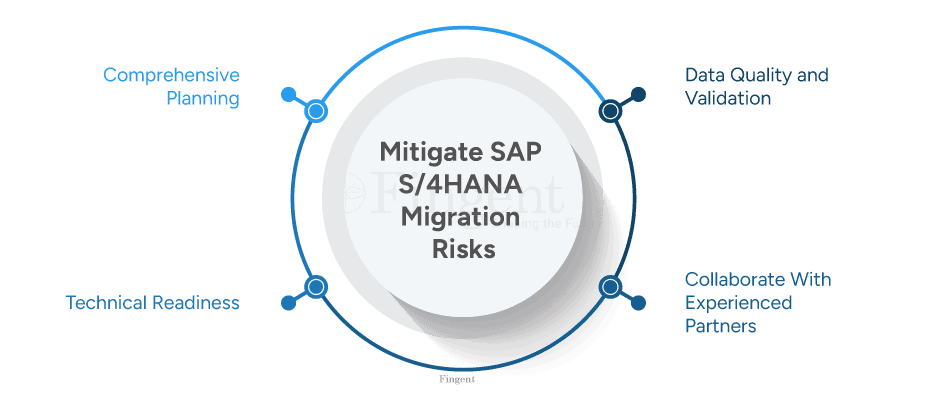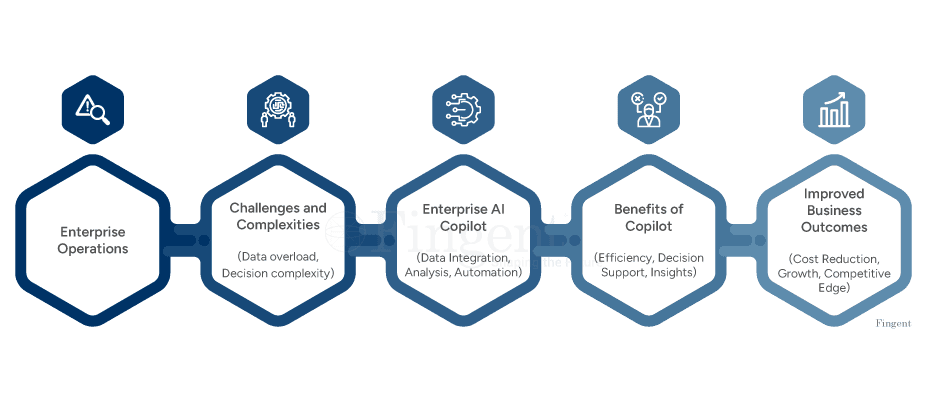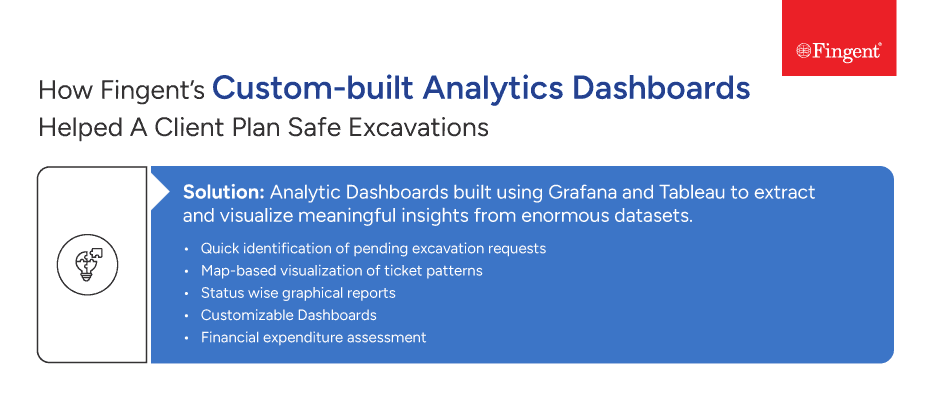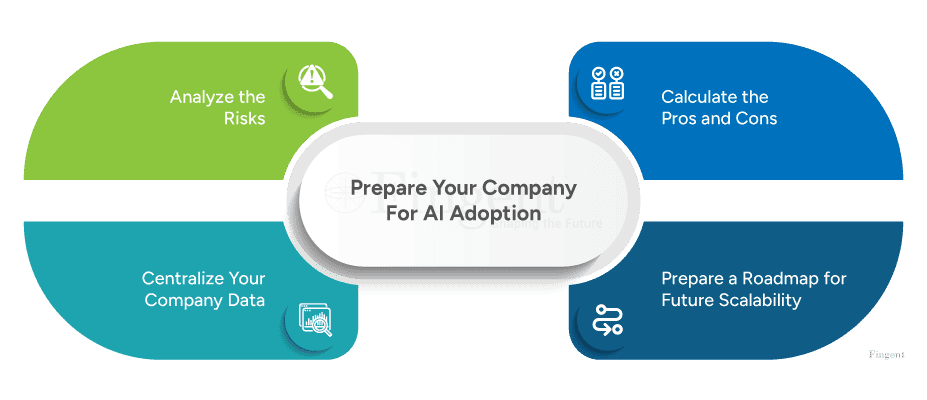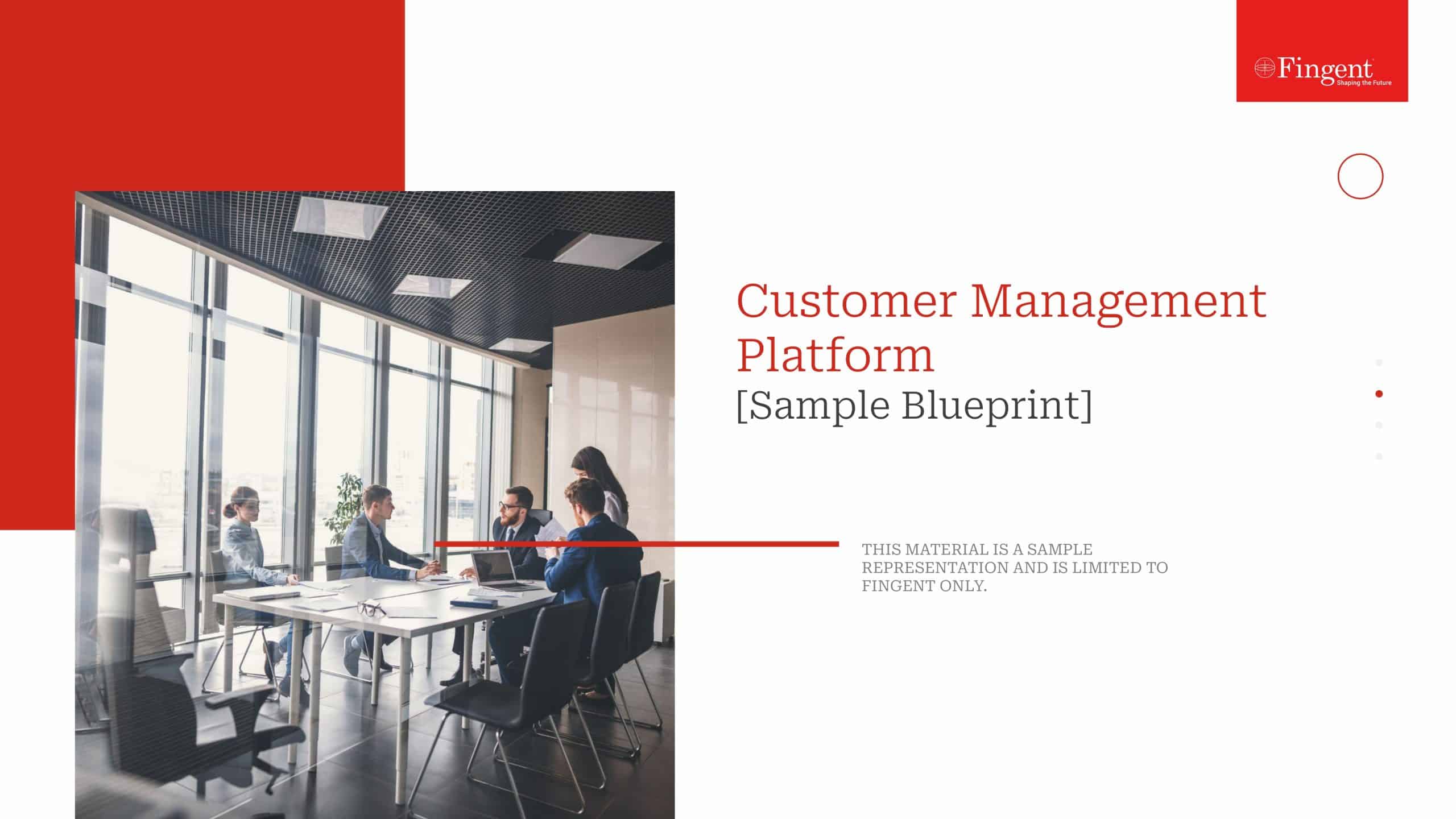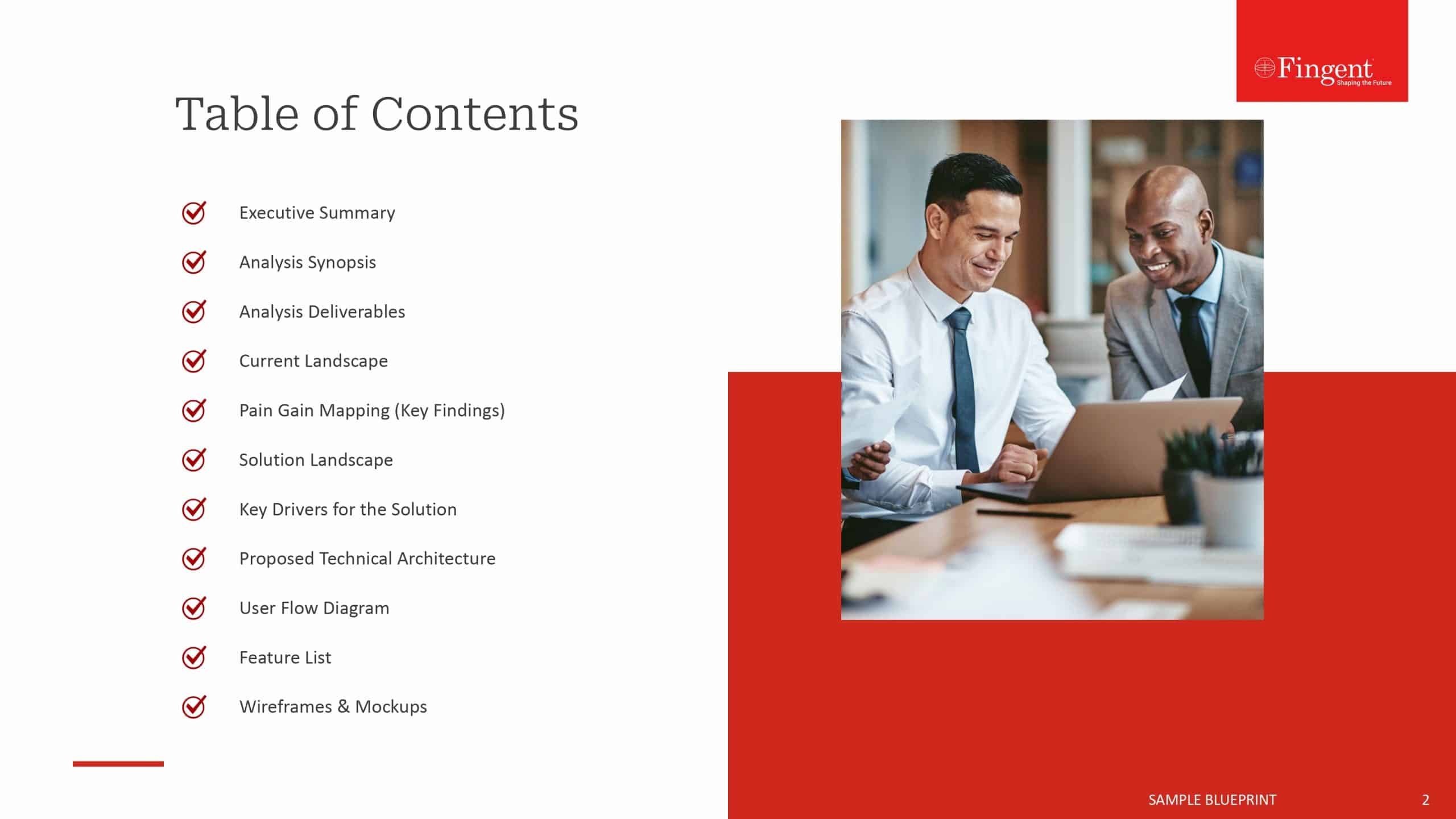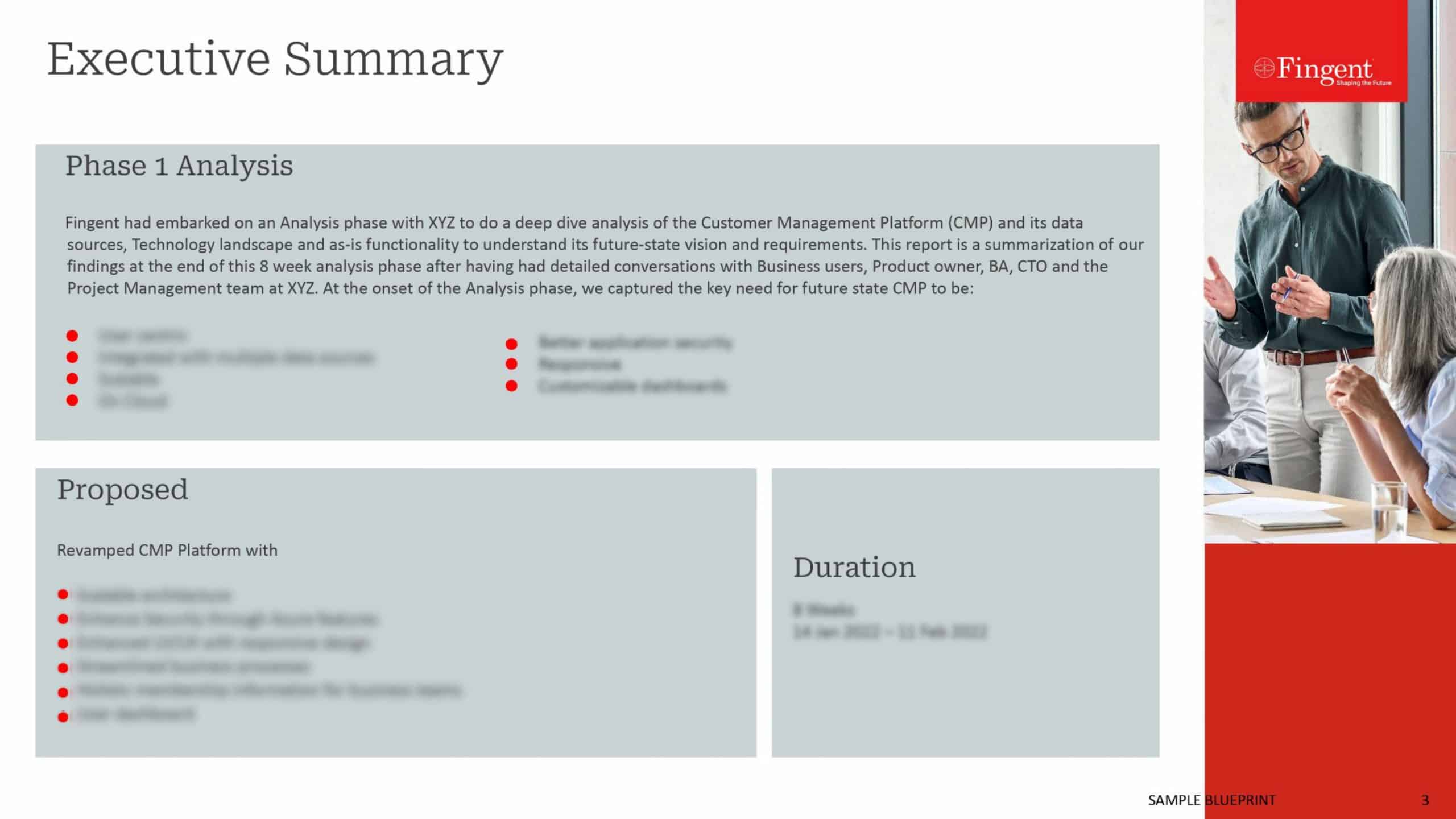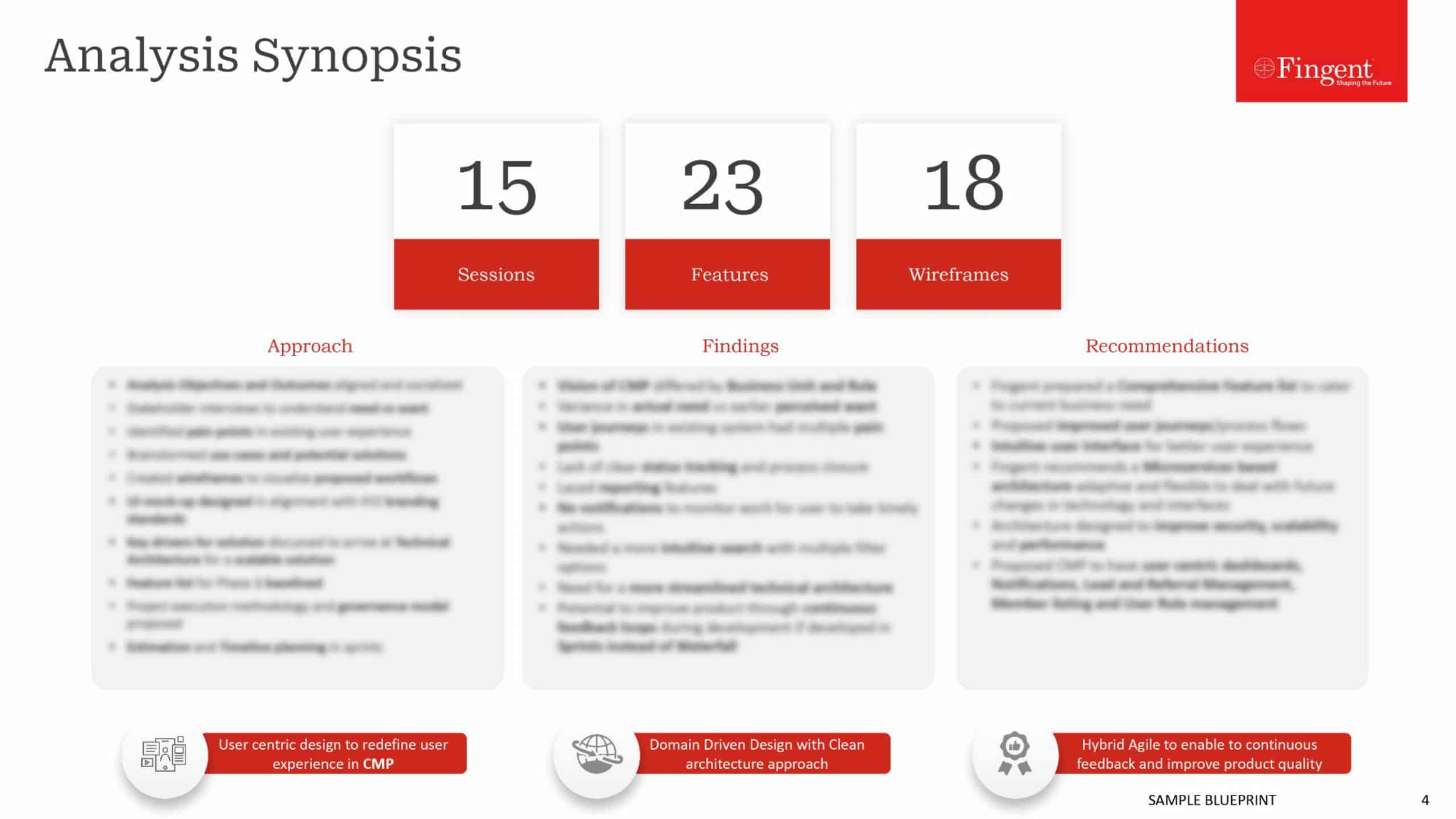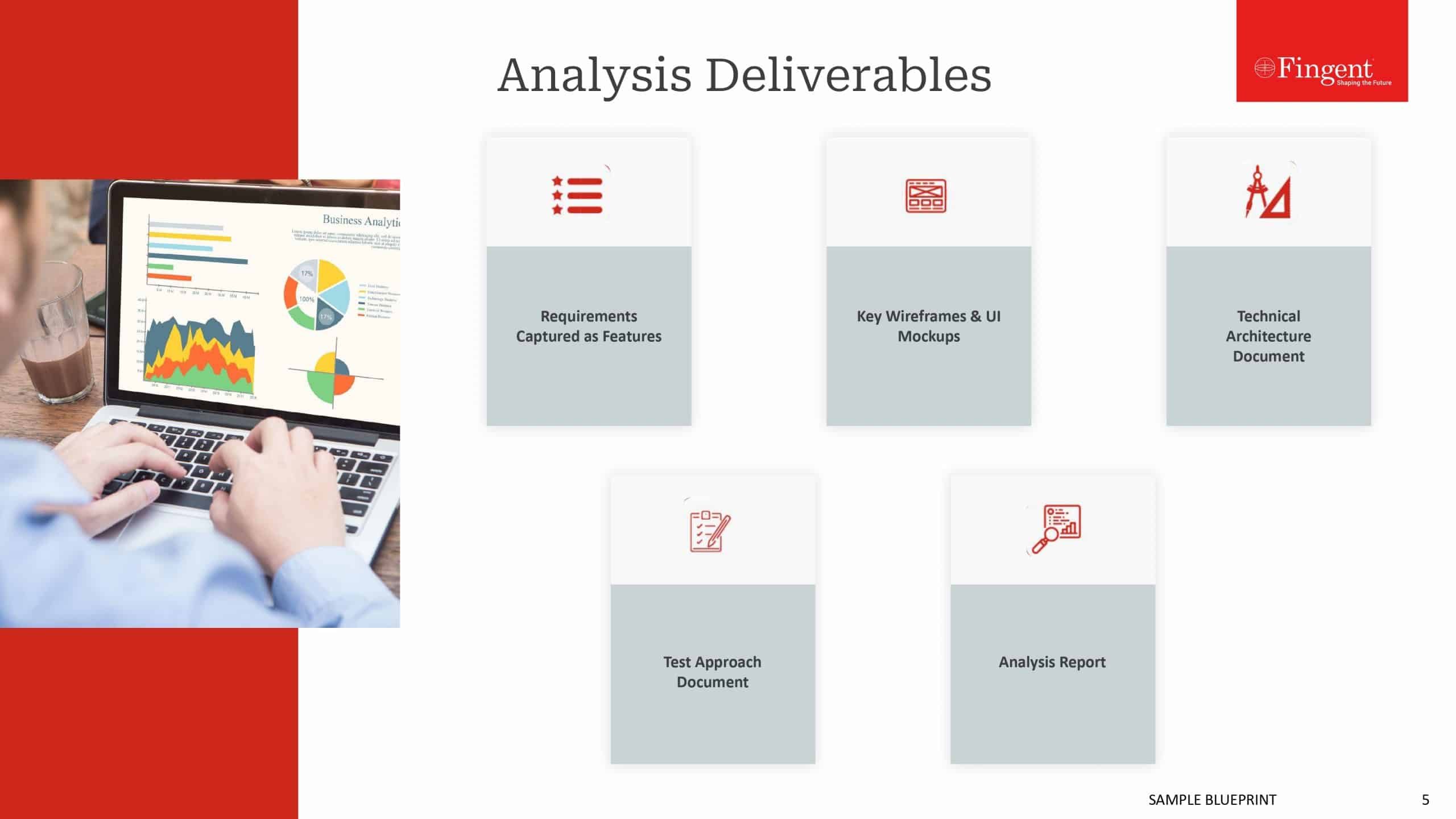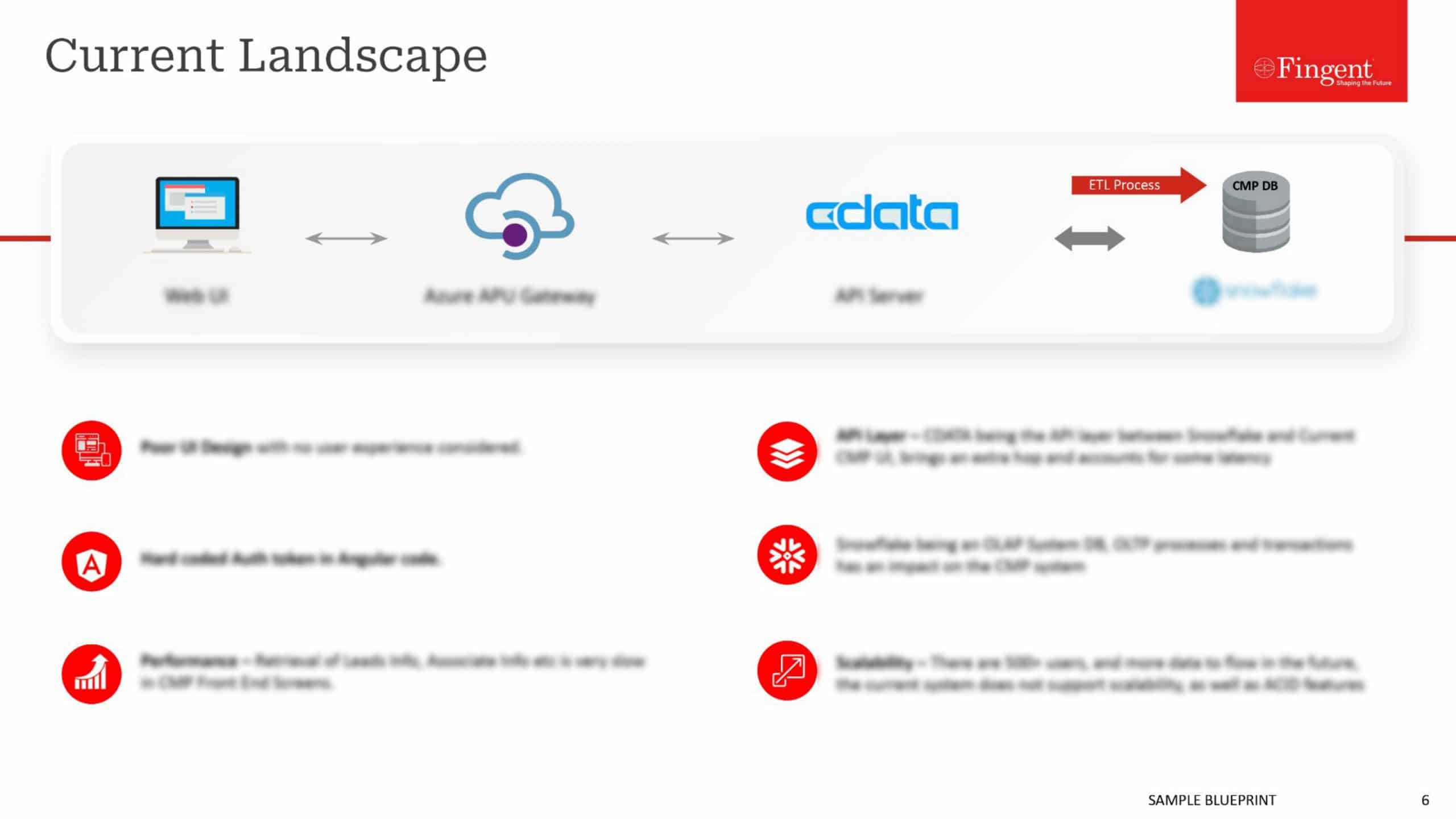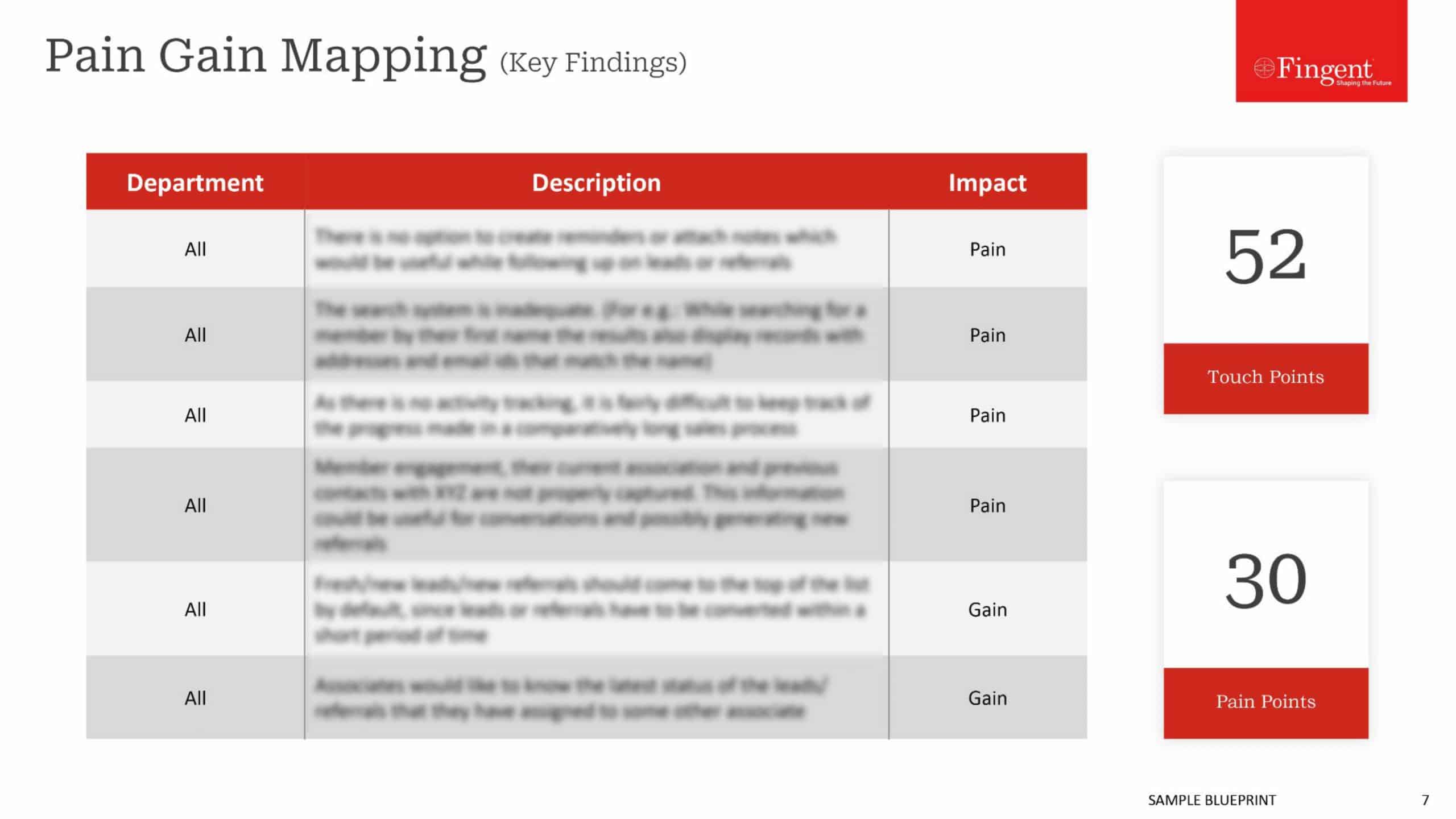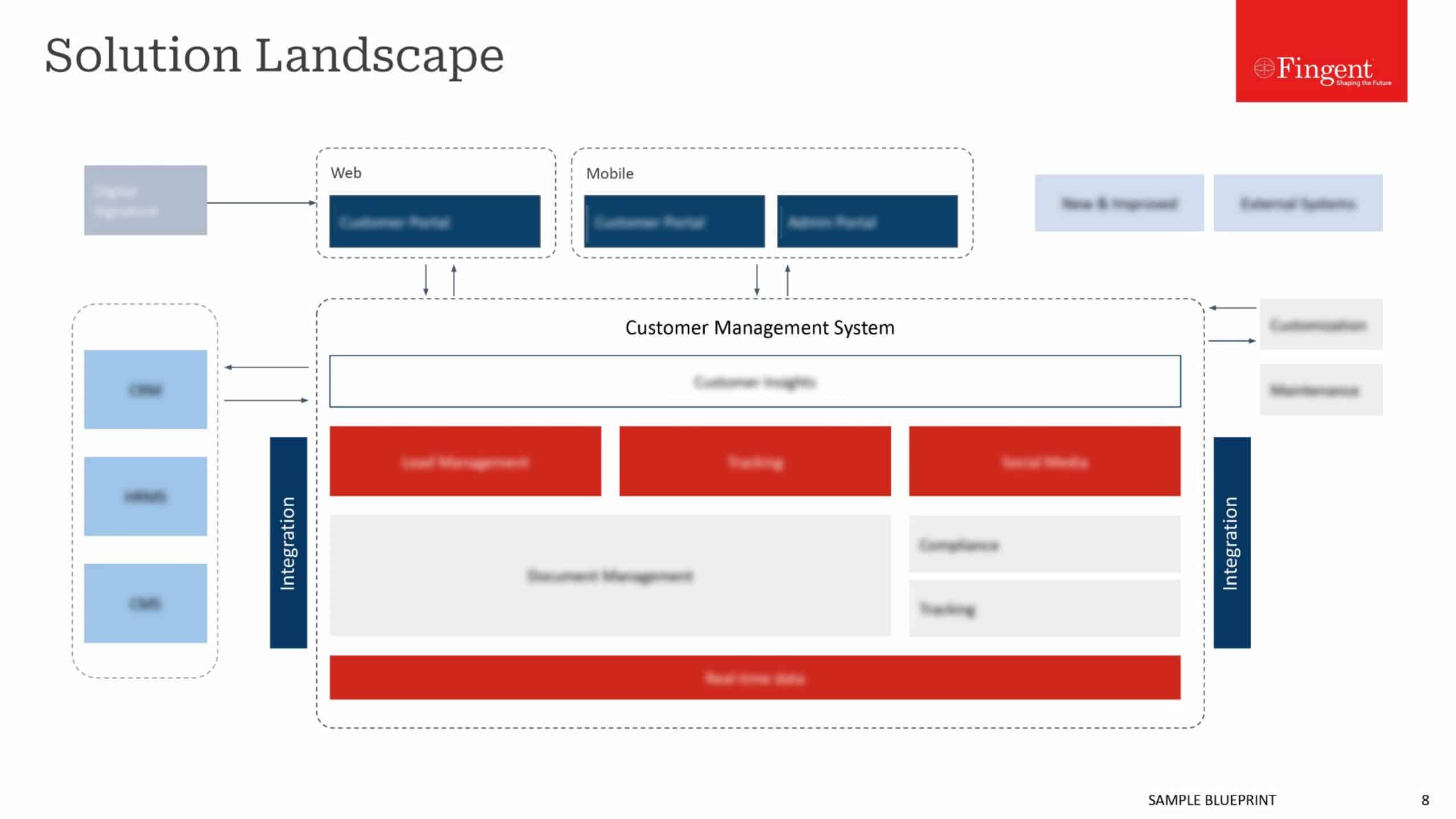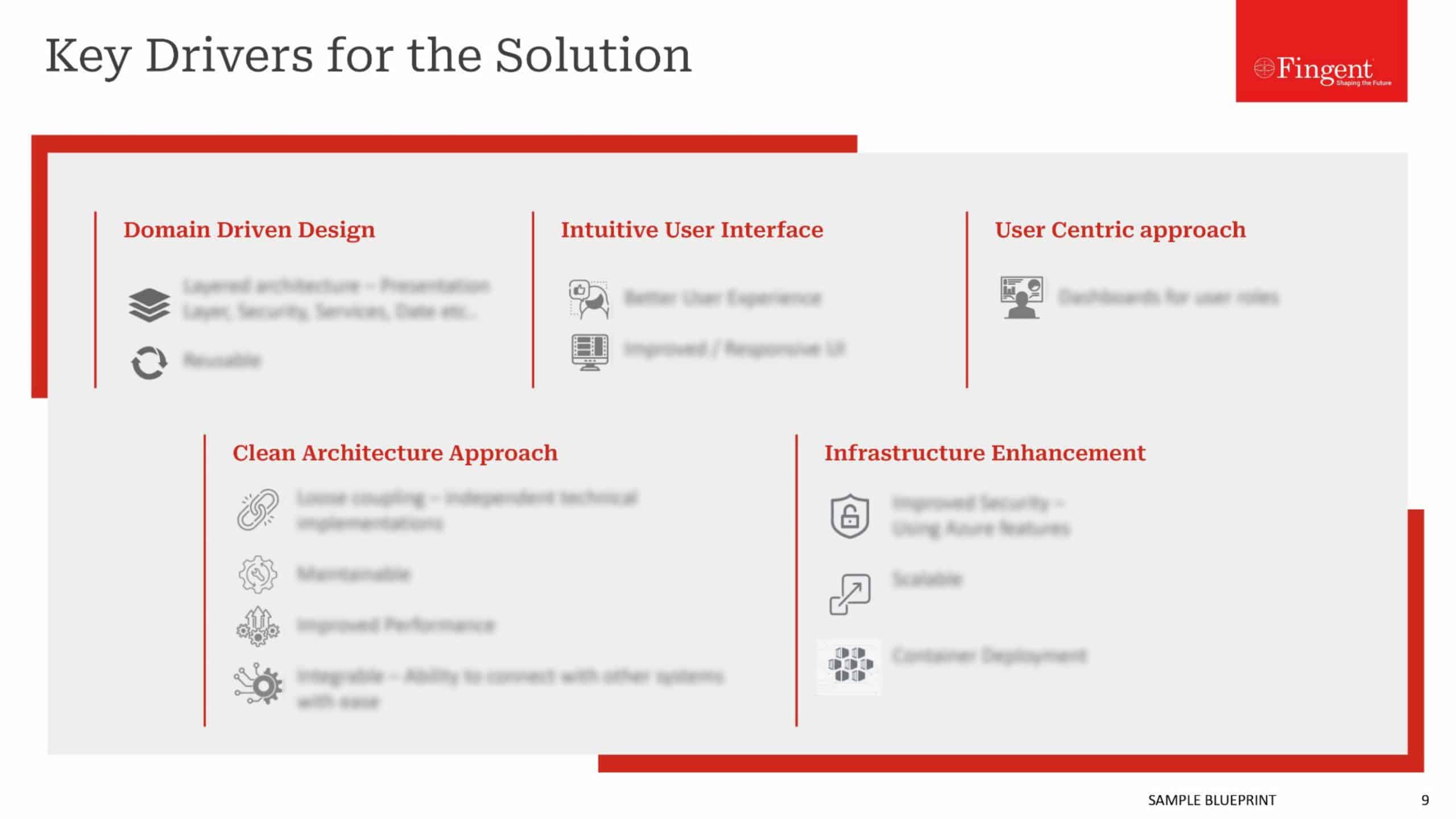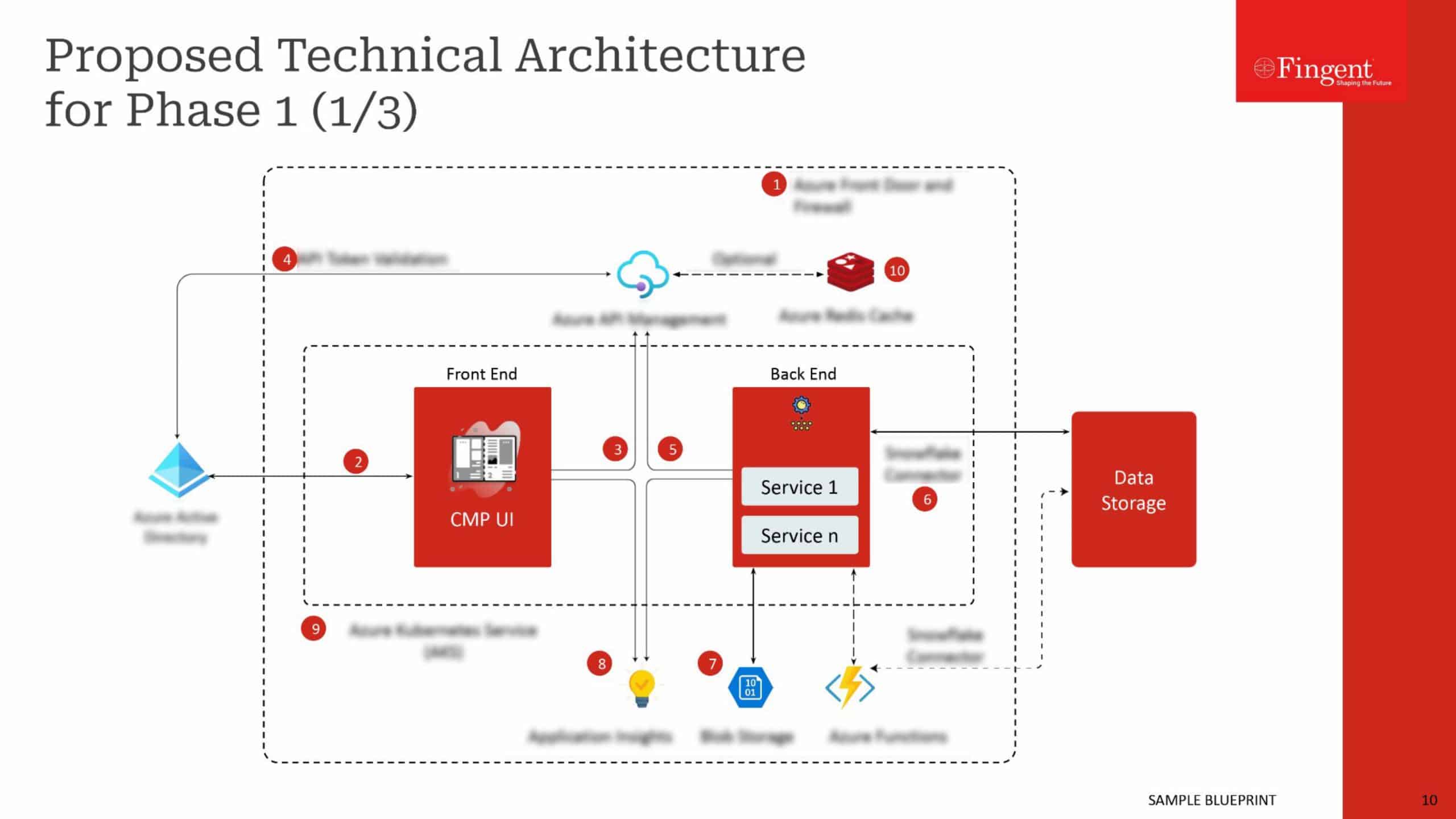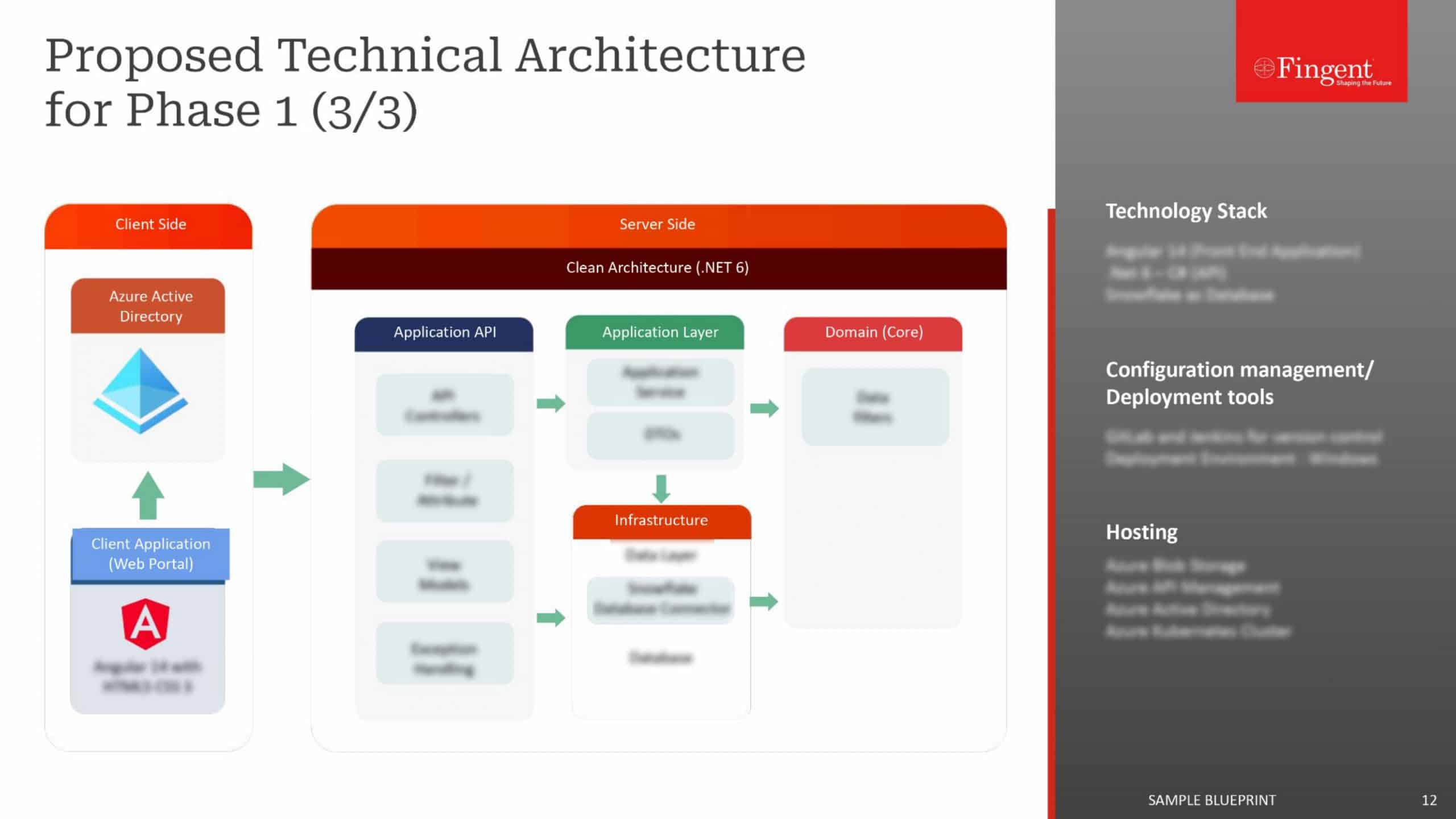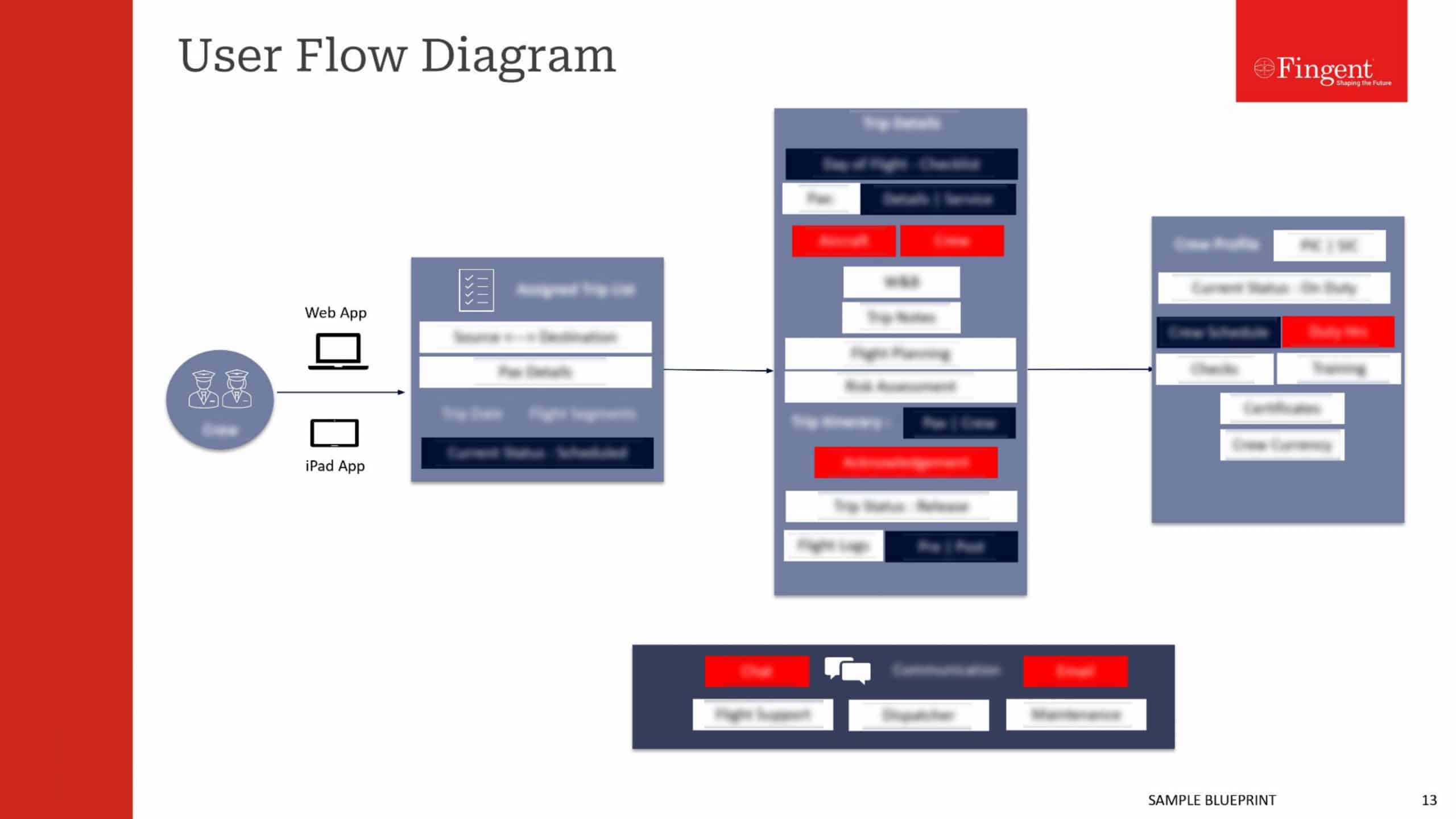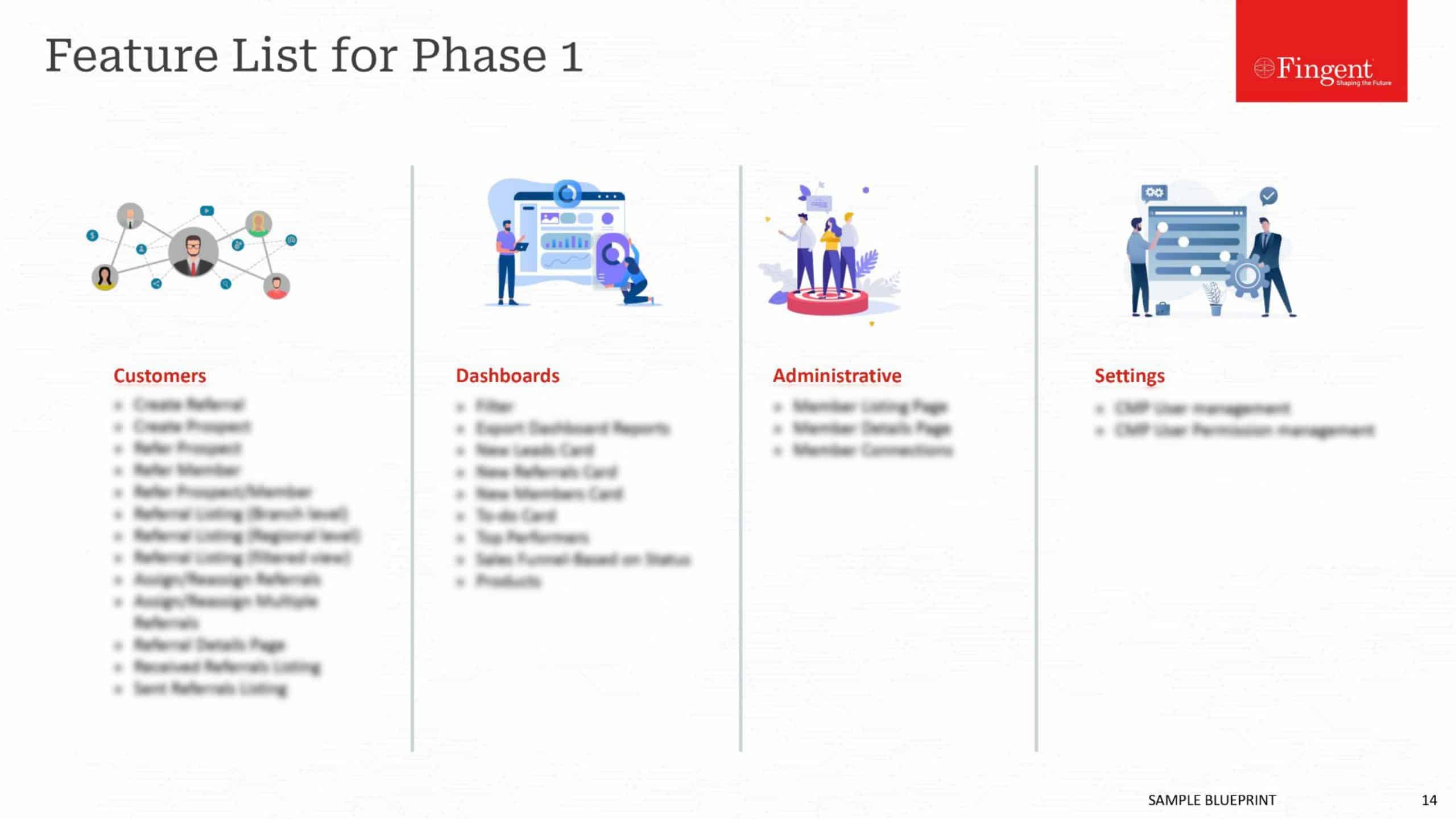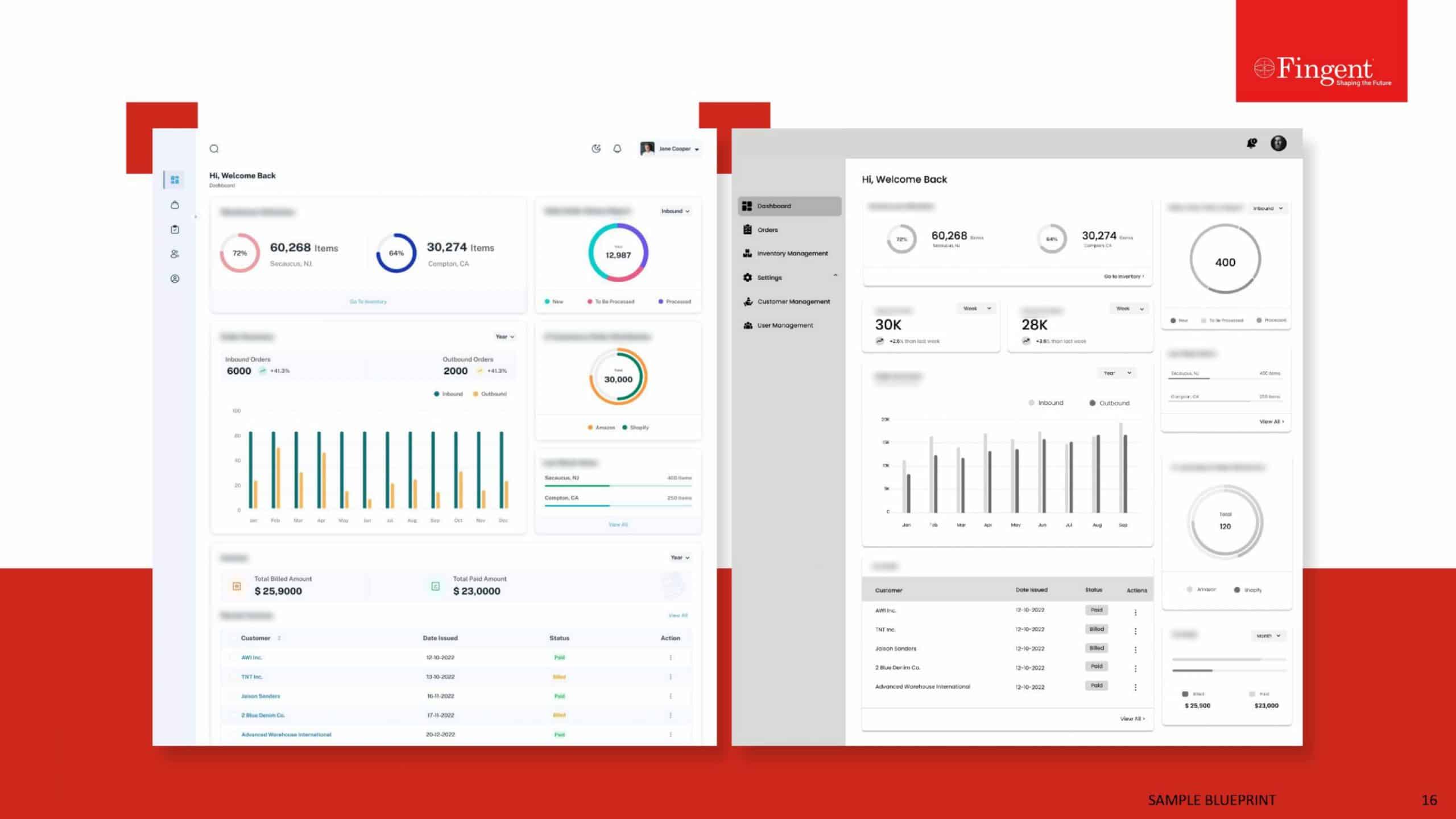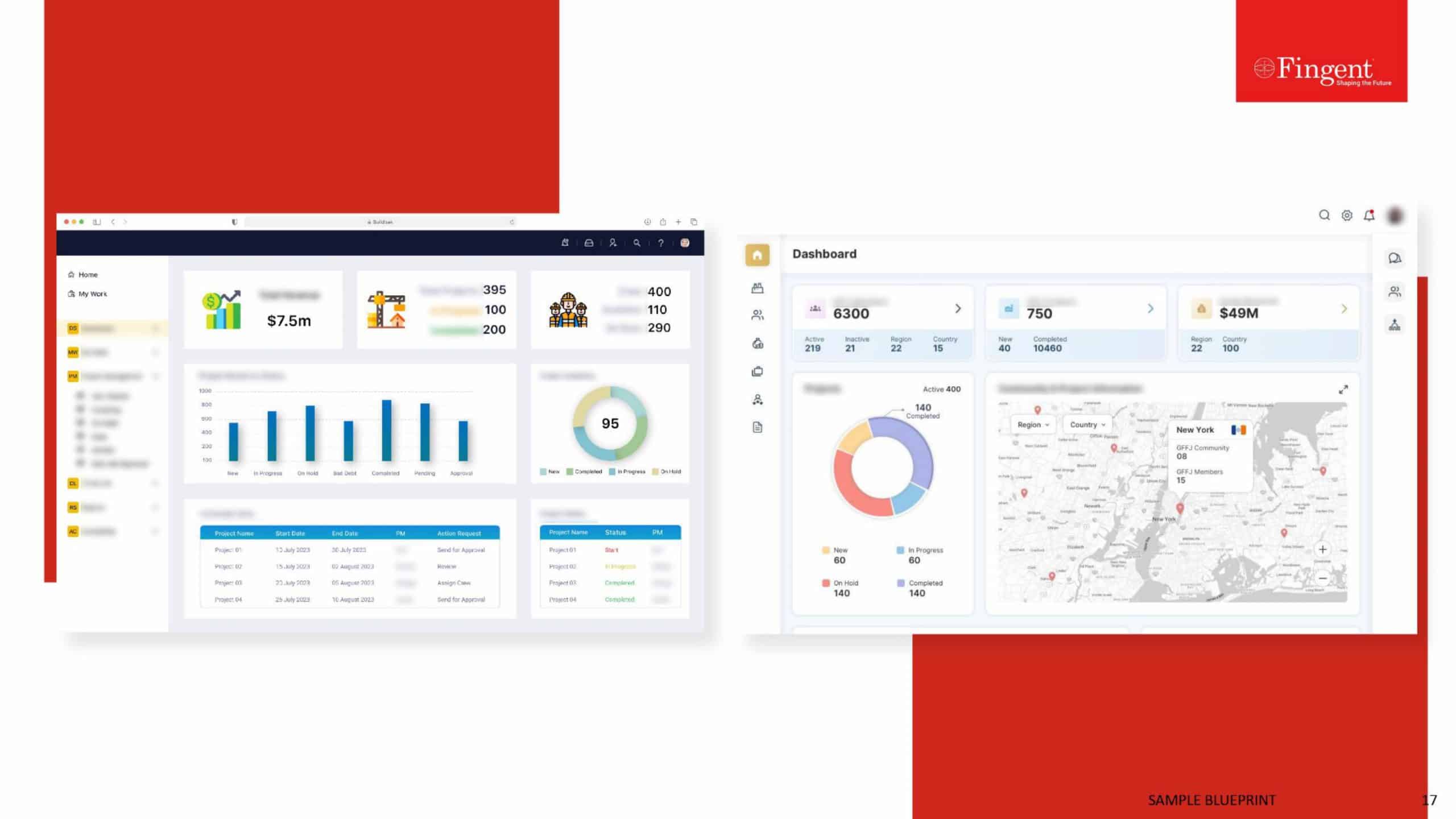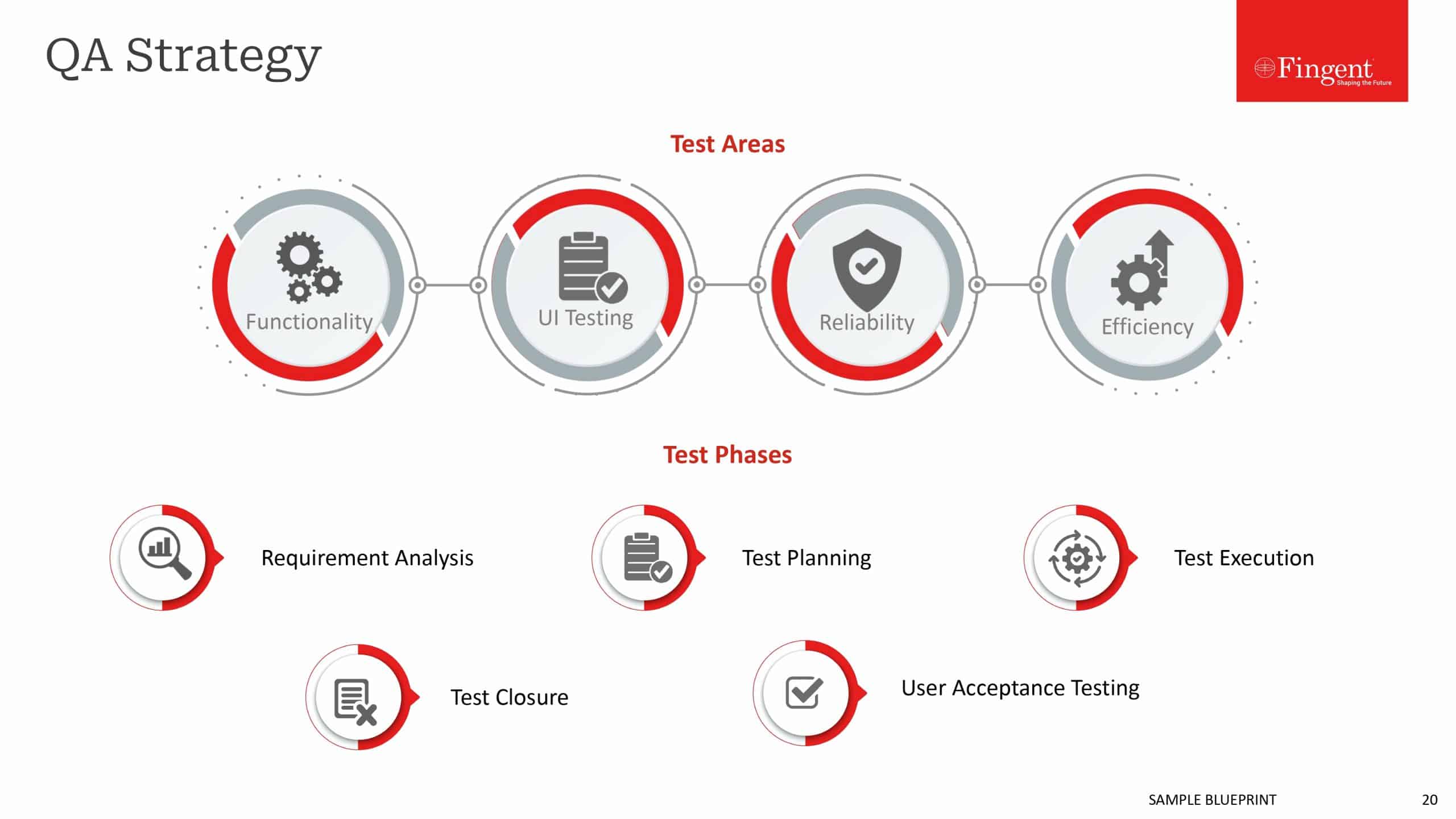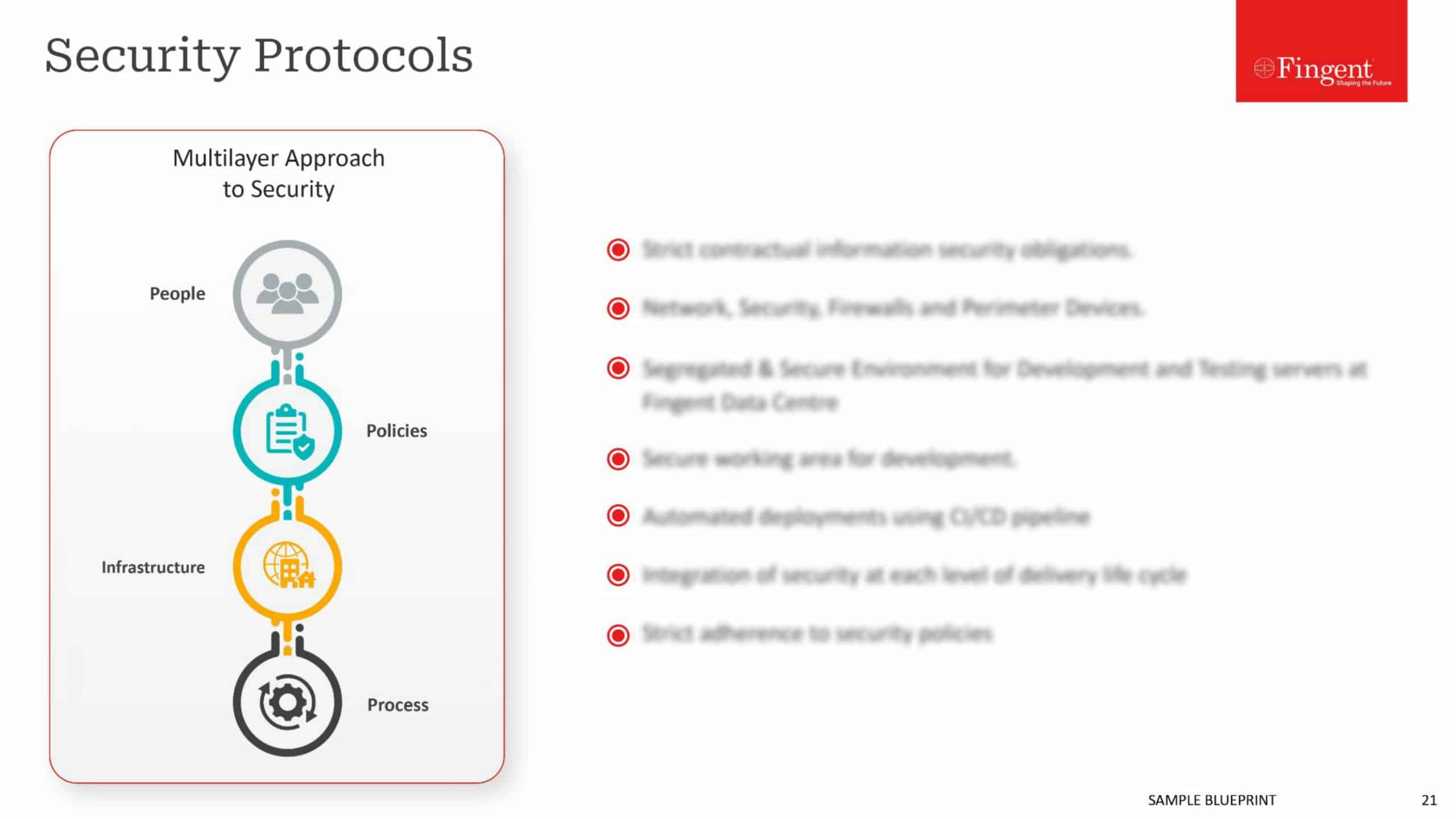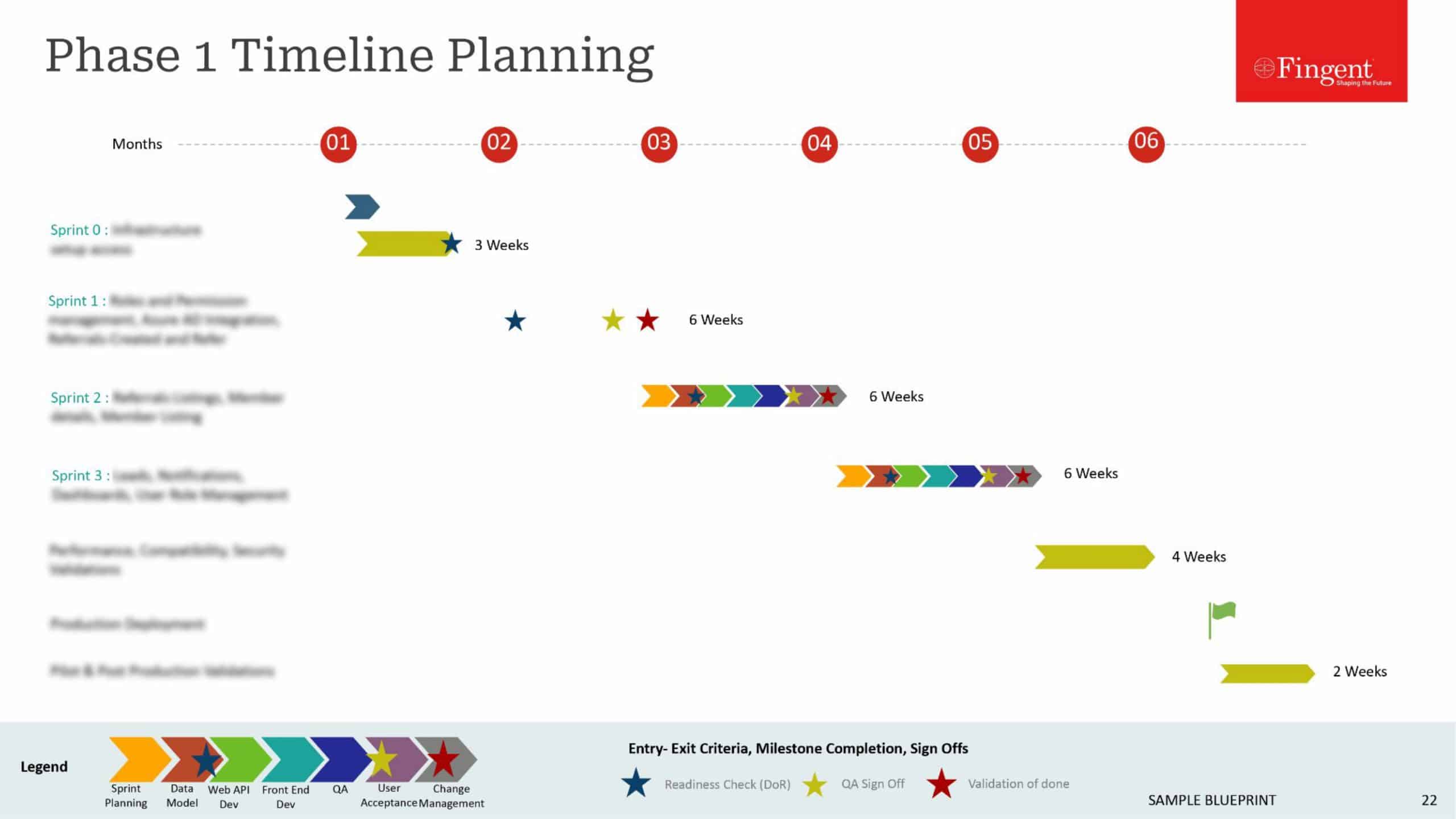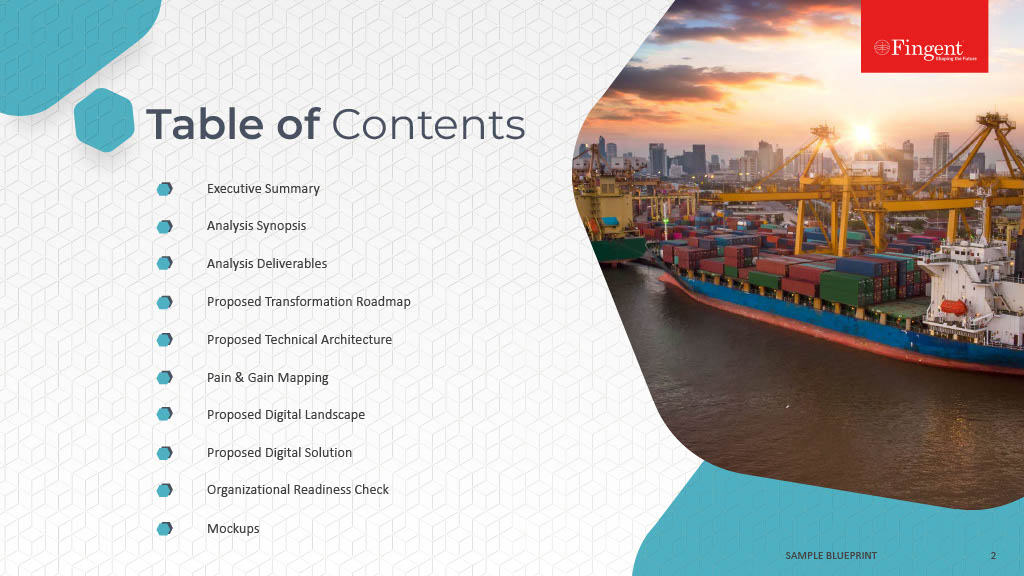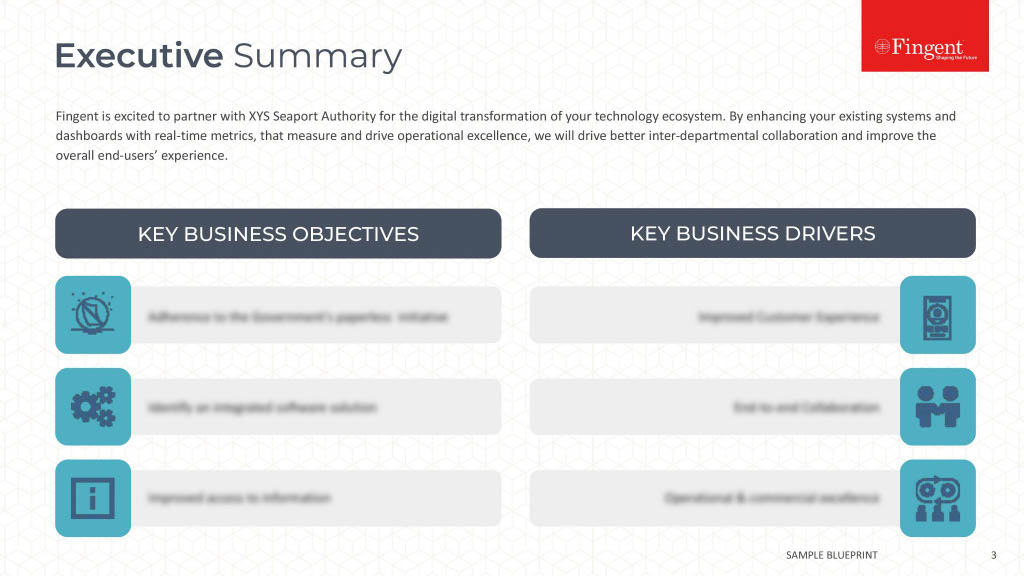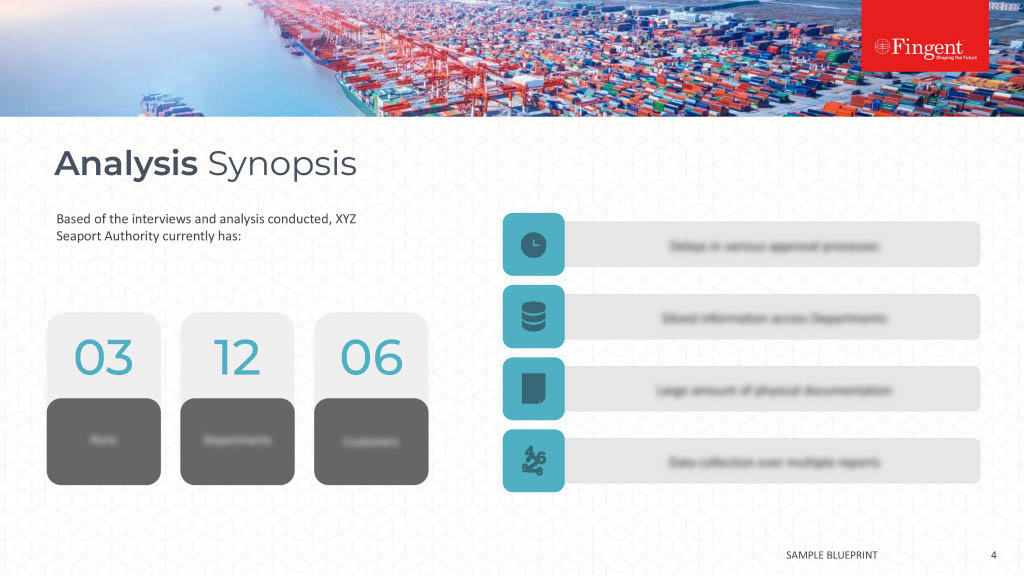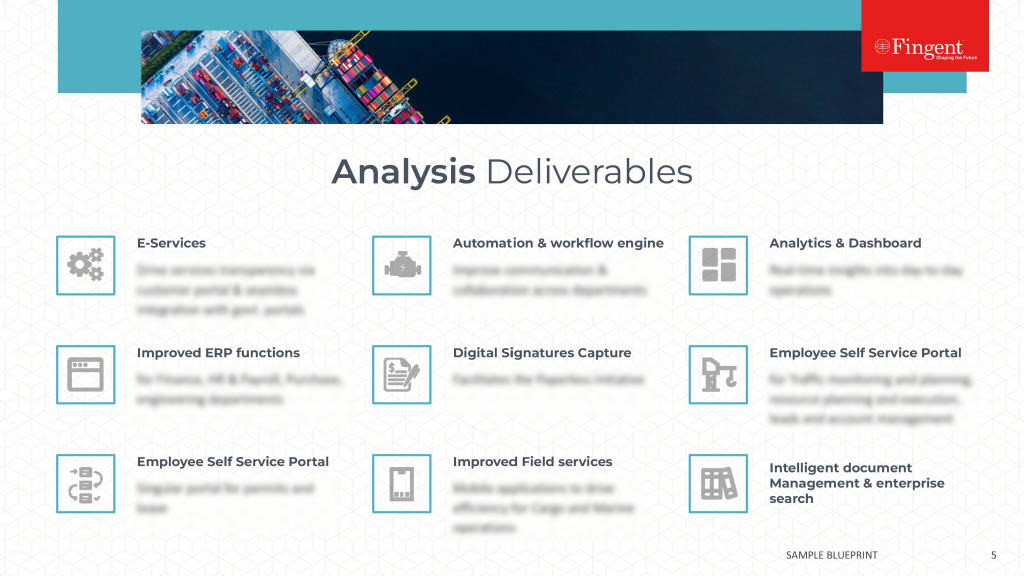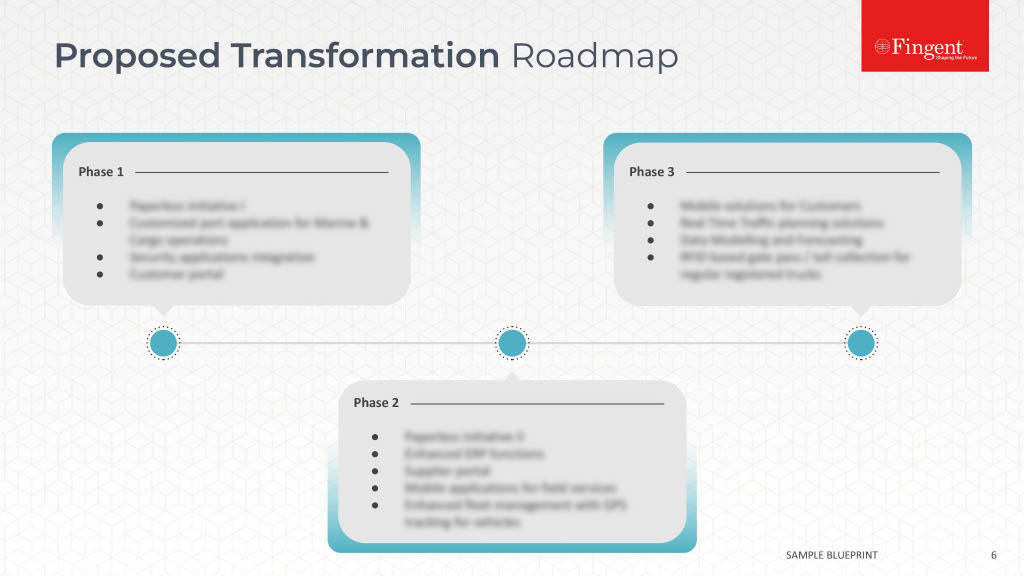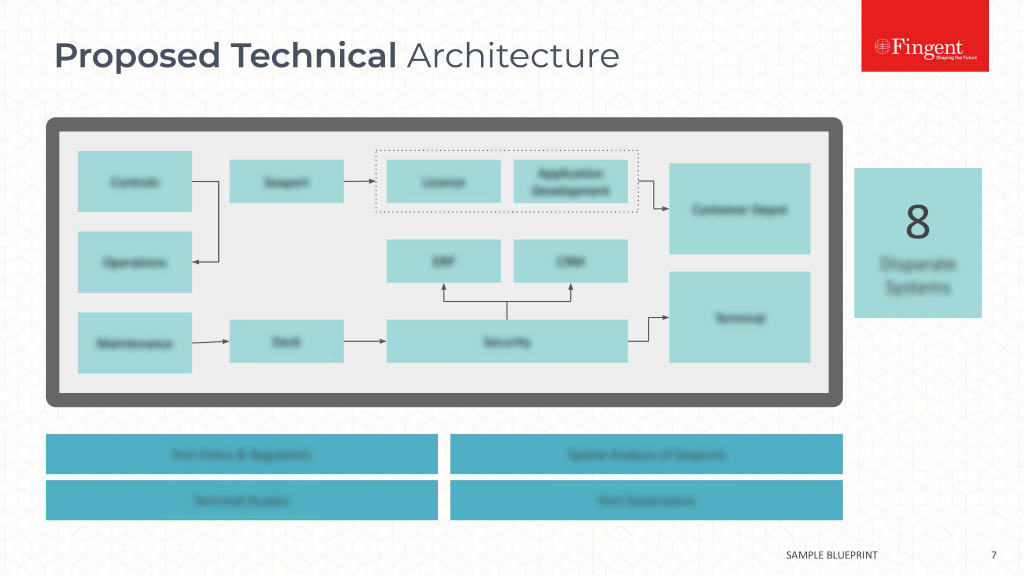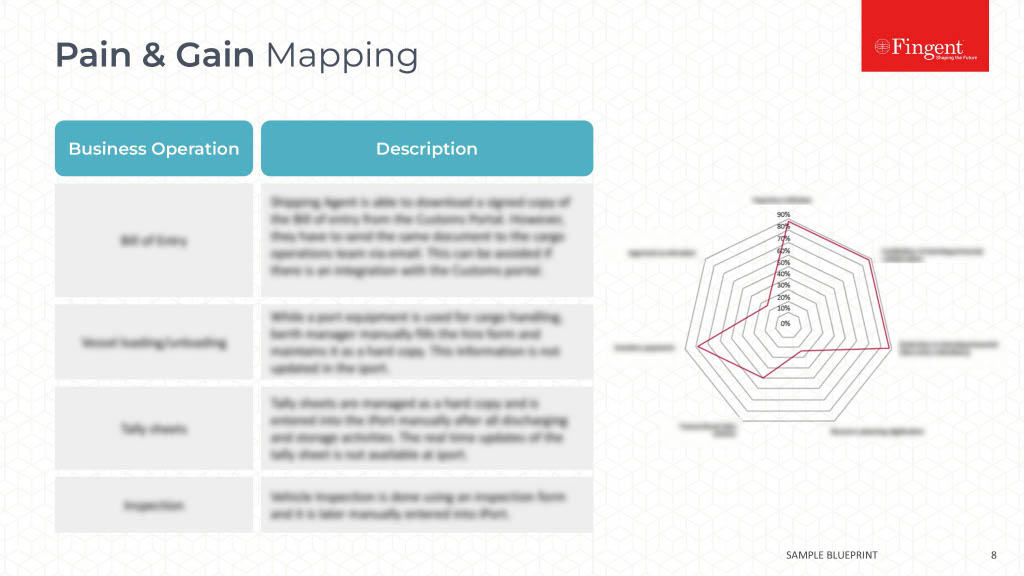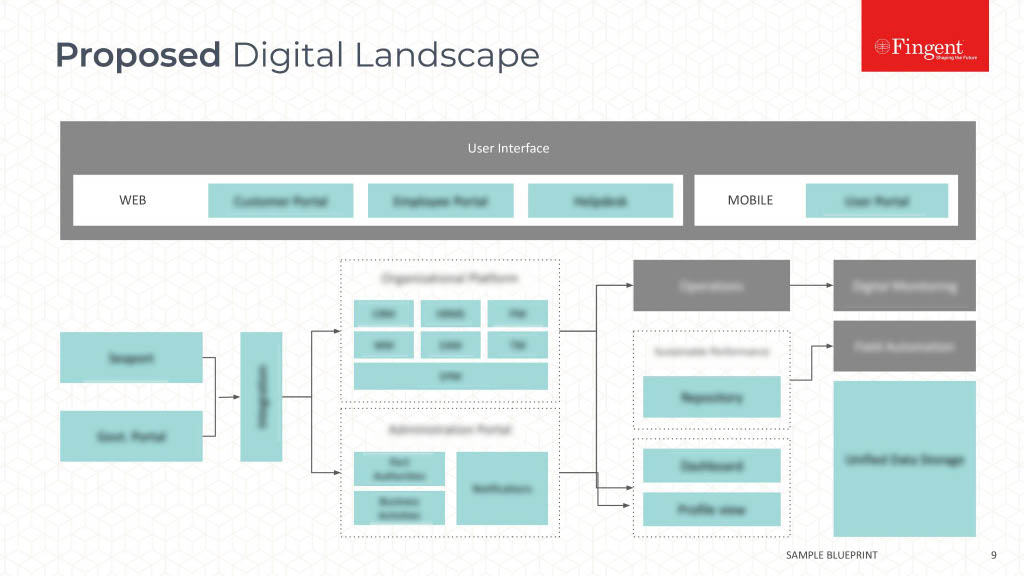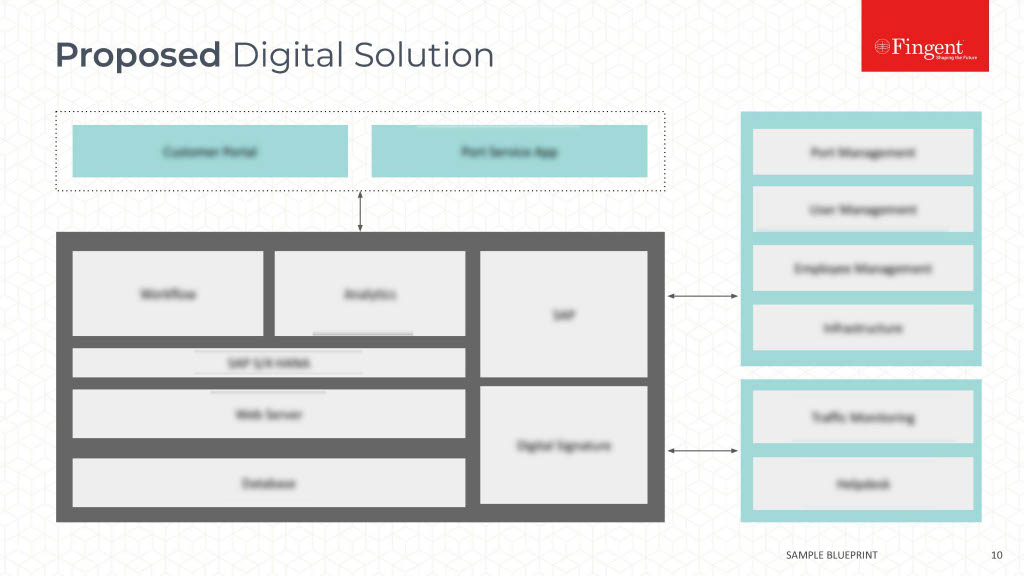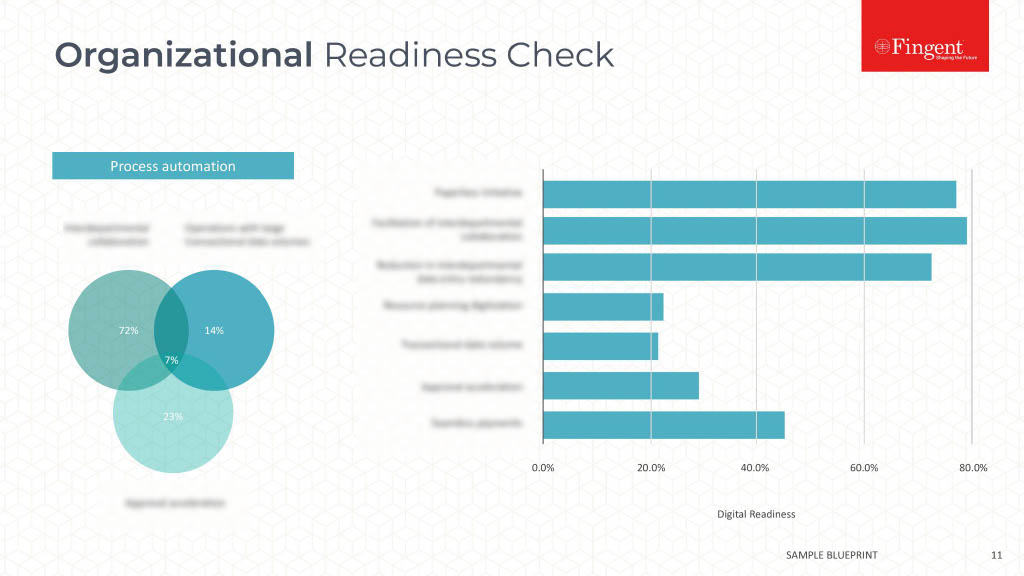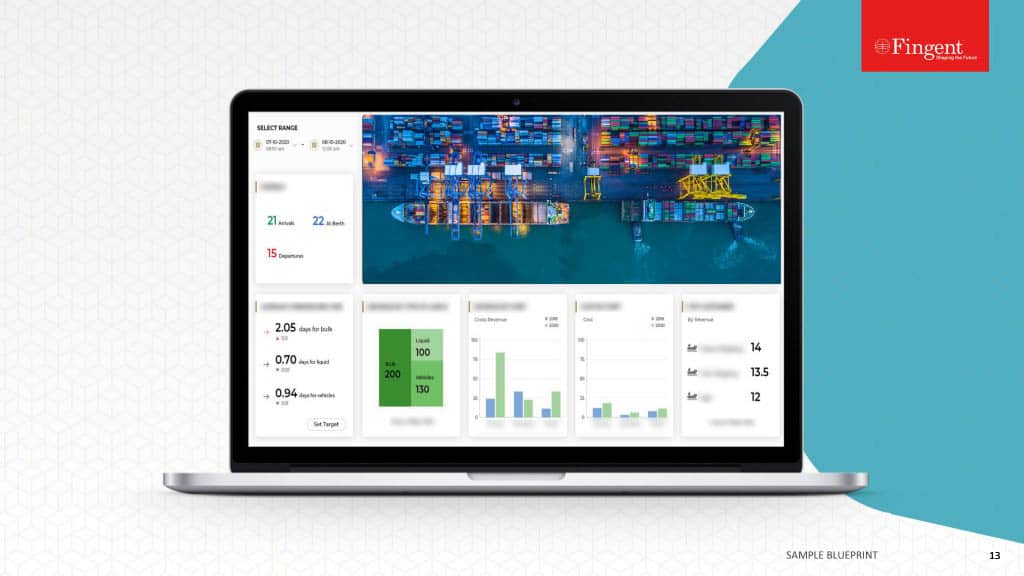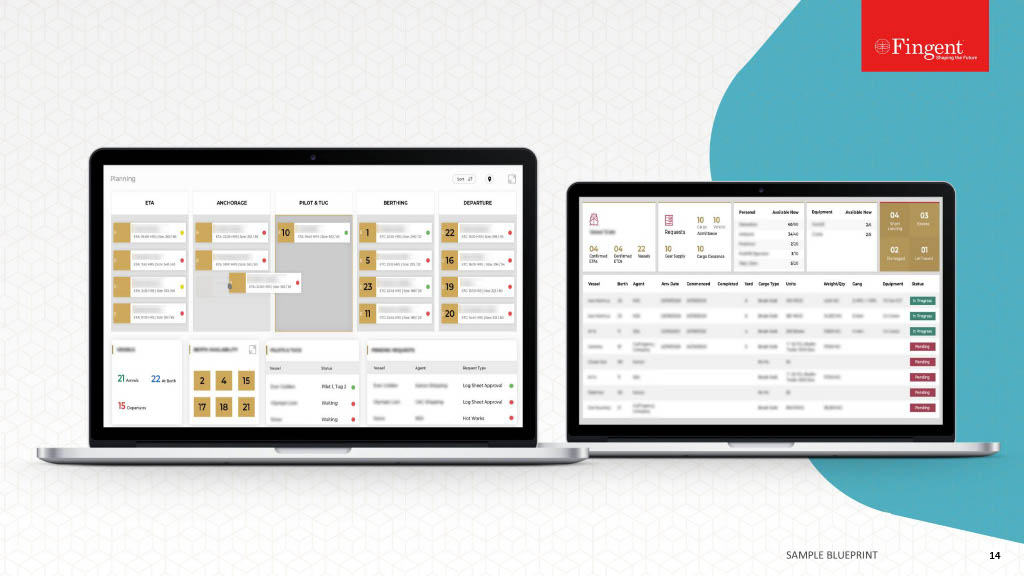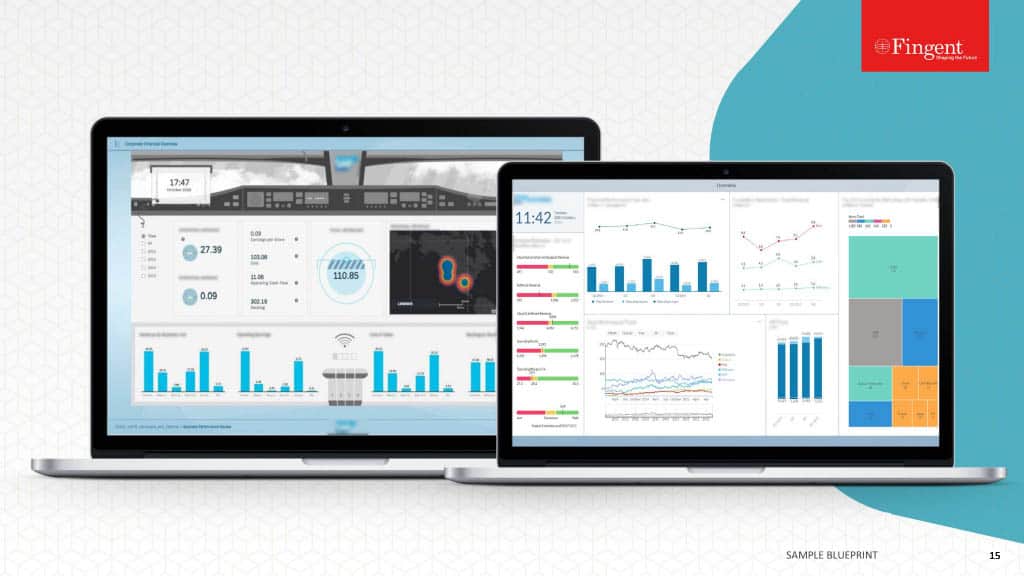Category: Business
Wine and wisdom get better with age. But software doesn’t. That’s why experts say legacy software modernization is inevitable for modern businesses.
Picture this! Ten years ago, you might have owned a PC running Windows XP. But today, your new computer runs Windows 11. The latest OS makes your current PC more powerful and capable than the one you owned ten years ago. Likewise, your business is no longer the same as it used to be when you started it. Using legacy, underperforming software to manage your business can stall its growth. So, how can you make your business software robust and relevant? Thanks to legacy software modernization services for making your applications relevant and competitive.
This article explores why you need to invest in application modernization.
Don’t Allow Outdated Technology To Sloth Your Business Growth
Can Clinging To Outdated Technology Cost High For Your Business?
Yes! Holding on to outdated technology can cost your business more than it saves. These real-world examples prove the damaging effects of legacy software on businesses.
The Rise and Fall of Blackberry
The tale of Blackberry is a classic example that reveals the pitfalls of legacy software.
What was once a leader in the smartphone market lost ground to rival operating systems—iOS and Android. And the reason? Failure to innovate and reluctance to get rid of legacy system elements.
In 2011, Blackberry made a revenue of $20 billion. Fast forward to 2022, the figures dropped to $718 million. The same year, Blackberry decommissioned the infrastructure and services used by their legacy software and phone operating systems.
Myspace, The Lost Space
The story of Myspace is no different from that of Blackberry. Launched in 2003, Myspace was the first social network to reach a global audience in the pre-Facebook era.
Post-2007, Myspace started losing millions of users to its rising rival, Facebook. The most cited reasons behind Myspace’s failure are lack of usability and flexibility, low innovation, and slow load times.
Delta: Back-to-Back IT Outages
In August 2016, Delta Airlines suffered a loss of $150 million due to an outdated reservation system. Built in the 1960s, the system underwent a major crash caused by a power failure. The incident forced Delta to delay or ground most of its flights for at least six hours worldwide.
How can one forget the recent CrowdStrike outage that disrupted Delta’s operations worldwide? The incident affected Delta’s crew-tracking software, forcing them to cancel over 7,000 flights over five days. According to a CNBC report, the five-day outage cost the airline nearly $500 million.
How Does Legacy Software and Technology Impact Your Business?
Here are a few ways outdated applications affect your business’s performance and growth.
1. Lack of Interoperability
Legacy applications struggle to integrate and communicate with each other. Poor interoperability can hamper your progress. It can also slow down the adoption of more efficient processes.
2. Security Vulnerabilities
Outdated security measures and lack of updates can make legacy apps more susceptible to cyber threats.
3. Outdated Technology
Legacy applications often rely on outdated technology. Obsolete technology can make them incompatible with modern standards and best practices.
4. Limited Scalability
Scaling legacy applications to accommodate evolving demands can be challenging and expensive.
5. High Maintenance Costs
Legacy applications demand extensive resources and maintenance. This can result in escalating costs over time.
6. Inefficient Performance
Outdated software code and technology can mar the performance of legacy applications. This can hinder productivity, resulting in knowledge silos and slow response times.
7. Poor User Experience
Legacy applications fail to provide the Uber-like, personalized experience that today’s customers seek.
8. Operational Disruptions and Delays
Finding the right talent to track, maintain, and support legacy applications is arduous. This can lead to operational disruptions and delays in resolving critical issues.
Legacy Application Modernization: Excerpts From A CTO
How Can Businesses Solve the Risks of Legacy Software?
We’ve seen the risks legacy apps can expose your business to. That said, what’s the right approach to solve them?
Enter legacy software modernization—a process that allows you to upgrade or transform outdated, inefficient software systems into more contemporary, efficient, and adaptable solutions.
In a recent survey, RedHat highlights the primary benefits of application modernization. With legacy software modernization services, more than 50% of companies have achieved:
- Improved security (58%)
- Greater scalability (53%)
- Enhanced reliability (52%)
These findings show the potential value that application modernization can bring to companies.
Why Is Legacy Software Modernization the Way Ahead for Businesses?
Sticking to legacy technology will undermine your future projects and growth plans.
According to McKinsey, 70% of business transformation’s impact depends on technology. If the technology you use is old and obsolete, your entire IT budget will be spent maintaining legacy applications and infrastructure.
91% of customers consider ending relationships with companies that use obsolete software technologies.
The message is clear. Companies need to modernize if they want to remain competitive.
How Does Legacy Software Modernization Benefit Your Business?
In 2022, IDC predicted that most legacy applications would be updated by 2024. 65% of the applications will use cloud services to extend functionality or replace inefficient code.
Modernizing legacy apps will make them more secure, flexible, and scalable. Here are some of the top benefits of legacy app modernization:
1. Enhanced Customer Experience
Modernized applications offer new features, improved performance, and reliability. With a revamped UI and UX, modernization enhances customer experience and satisfaction.
2. Improved Employee Experience
Modernized applications boost employee productivity and collaboration. They help employees do their jobs faster while saving productivity. Features like automation and analytics allow employees to focus on more strategic initiatives. It helps reduce the risk of employee burnout and boost workplace morale.
3. Streamlined Data Management and Governance
Modernized applications improve data management and governance efficiency within your organization. It helps ensure the quality, consistency, security, and usability of your data.
4. Cost Reduction
Modernized applications drive operational efficiency, cut unnecessary maintenance costs, and boost employee productivity. All these lead to tremendous cost savings in the long run.
5. Increased Agility
Modernized applications allow businesses to be more agile and responsive to change. Contemporary applications help you adapt quickly to evolving market trends and needs. Restructuring and refactoring legacy software will make it more maintainable and adaptable.
6. Improved Cybersecurity and Compliance
Modernized applications incorporate the latest security standards and technologies. This will help safeguard your data against unwarranted access, cyber-attacks, and theft.
Ensuring compliance with industry standards is an integral component of application modernization. It helps avoid costly compliance issues. With app modernization, you can also reduce the risk of security breaches.
7. Hybrid IT—Best of Both Worlds
Modernization combines the preservation of critical components with functionality enhancement. Today, hybrid IT is a principal cloud strategy pursued by many companies. Hybrid IT brings to your table the best of both worlds. It blends the security and control of an on-premises environment with the flexibility and scalability of cloud services.
Enterprise Application Modernization Trends and Best Practices To Look Out For
Busting the Common Myths About Legacy Software Modernization
# Myth 1: Modernization Is Expensive
Studies reveal that successful modernization boosts annual revenue by 14% and can lower application maintenance and running costs by 30% to 50%.
You can prioritize your modernization strategy to control costs and complexity. For example, a smart application rewrite can be more effective than building a new application from scratch.
# Myth 2: Modernization Requires a Strong Internal IT Team
Hiring in-house staff with in-depth technical knowledge consumes your budget and time.
Engage with an external software vendor to handle your IT backlogs. An outsourcing partner can reduce your dependency on strong in-house IT teams. They provide you with the right mix of talent and technology to transform your legacy applications. Besides, you can save a lot on in-house hiring and maintenance.
# Myth 3: Modernization Will Disrupt My Business
Fear of operational disruptions forces many businesses to opt out of modernization.
Not all modernization scenarios need a platform switch. Usually, a wrapping approach is possible instead of a replacement strategy. Wrapping can be done in two ways:
- Adding a layer of API on top of the Service Oriented Architecture (SOA) in the legacy system. This will enable the legacy application with new capabilities. There is no need to install any special infrastructure.
- Another way is to connect an API directly with the back-end legacy system. It will give each system a separate wrapper. It avoids the need to integrate local service data with other services.
Today, custom software development vendors use RESTful APIs across many application modernization requirements. This way, newer functionalities can be enabled by migrating just the applications.
# Myth 4: If It’s Not Broke, Why Fix It?
Many businesses are complacent with the status quo. After all, why even touch something that works, right? Well, not exactly.
Risk can creep out from just about anywhere. Outdated security protocols, compatibility issues, evolving regulations—several aspects pose hidden costs or threats to your competitiveness.
Modernizing legacy applications is essential to cover your bases. Legacy software modernization is a critical hinge on which your business’s survival depends. It makes your business more resilient in the face of uncertainty.
# Myth 5: Modernization Involves Rigorous Planning and Complications
Building a modernization strategy requires a significant time investment. Modernizing without a priority can drive up costs and complexity.
Assessing the full scope of your organization’s needs upfront pays off in the long run. Take time to analyze the trade-offs between business and technology. Prioritize your needs and features. Find out what can enable a smooth modernization journey. Partner with a trusted custom software development company to execute your app modernization project.
How Can Companies Get Started With Legacy Software Modernization?
Here are four steps to begin your legacy application modernization journey:
1. Assess the Business Need to Modernize
Find out what is driving the need for modernization. Identify the opportunities that modernization will offer your business.
2. Choose Specific Modernization Efforts
Analyze the modernization efforts needed to meet your defined business goals. Map specific business outcomes and defined patterns of activity. Select a provider that can deliver the essential services.
3. Create a Modernization Roadmap
Identify the timeline for each phase of modernization. Ensure the journey in each phase adds incremental value while ensuring business continuity.
4. Make the Essential Changes to Adapt
Make necessary changes to your data structure and governance policies. Adapt your culture, skillset, and organizational requirements to benefit from the new workflows and resources.
Strategize Your Legacy Software Modernization Journey With Experts
How Can Fingent Help You With Legacy Software Modernization?
Right consulting support can make a real difference in legacy application modernization services. How does modernizing legacy apps with Fingent help you?
We help customize and integrate the best hybrid solution for your circumstances. Our team brings in:
- Deep cloud expertise
- Relevant skill sets for app modernization
- Logical integration of multiple business applications
- Excellence in the latest technologies
- Strategic vision and support
- Industry and domain expertise
- Customization to suit your specific needs
Gain fast solutions and low-cost implementation with our legacy software modernization services. Address your key constraints and modernize your application portfolios with Fingent. Contact us to know more.
Stay up to date on what's new

Featured Blogs
Stay up to date on
what's new



Talk To Our Experts
Quality Talent at an Affordable Price – that is what nearshore software development brings to the table.
There are no two ways about it. It is getting more and more difficult to get skilled workers for your software needs. Reports show that the shortage of available talent is expected to be 1.2 million by 2026 in the United States! It makes sense then to address this situation before it’s too late.
The solution? Nearshore software development involves outsourcing your software to skilled developers in a neighboring country. This is definitely worth considering. Nearshore software development services can offer a seamless blend of cost-effective, reliable, and bespoke application development. Let’s find out how.
What is Nearshore Software Development?
Nearshore software development is outsourcing your IT needs to developers within your time zone or in the same geographical region.
As per Forrester’s research, 39% of business leaders expect to use nearshore services. They will take full advantage of the cost-effective, skill-packed, and geographical perks available.
This is a clear indication that businesses are recognizing the advantages of outsourcing. Nearshore software development is a facet of outsourcing that has recently gained recognition. We will see some reasons why, but let’s first get acquainted with the different options you have when it comes to outsourcing.
Outsource Your Custom Software Development Projects Today!
What are the Main Types of Software Outsourcing?
Onshore, offshore, and nearshore are the three main types of software outsourcing. All three have their benefits and it’s best to assess which of them would best suit your business. Here is an overview of them:
1. Onshore Outsourcing
Onshore outsourcing is when you hire a partner from the same country as you. These partners provide convenience and seamless communication. There is no language barrier or cultural gap since there is zero to minimal difference in time zones. However, a significant drawback to this method is the limitation of domestic talent. This can lead to high developer rates and a lack of experienced talent.
2. Offshore Outsourcing
In this model, your development team belongs to a country halfway across the world. It is the most cost-effective model and hence the most popular one. Here, you can hire the cheapest developer within your quality range. The biggest challenge in this model is the time zone difference. You can assign work to the team, but you will get your results the next day. There is also the potential for language and culture barriers. This will add a layer of strain on communication. Another risk factor is the legitimacy of the service provider. Legal actions become difficult and costly due to different jurisdictions and laws.
Read more: Offshoring Software Development: Here’s All You Need to Know
3. Nearshore Outsourcing
Nearshore outsourcing recruits the help of partners from neighboring countries. These countries often have a less than 3-hour time zone difference from your home country. You can enjoy cost-efficiency while widening your talent pool. You can evade language barriers by picking countries that speak the same language. Geographical proximity and affordability are the main advantages of nearshore outsourcing.
Nearshore vs. In-House Software Development
These two software development services are as set apart as their names suggest. In-house services mean that software development takes place within the company. Nearshore services denote that the project will be handled by an outsourced partner in a neighboring country. There are five key areas where the difference between the two methods shines.:
1. Expertise and Skill Access
An in-house development team has the benefit of having your team members under one roof. It also brings an irreplaceable, in-depth understanding of your company processes. Yet, it may lack certain specific skills required to keep up with competing software needs in the industry.
Outsourcing providers, on the other hand, will lead you to an unexplored pool of specialized talent. This will bring a brand new and specific skillset to the project. You will also be free to choose a provider with experience in the domain relevant to you and for a specific project.
2. Control and Communication
Working with an in-house team has the opposite effect. You gain more open and clear communication with the development team. You also have infinite control over the team’s workflow and project progress, which allows you to oversee and make any adjustments before execution.
Working with an outsourced team can open up a few communication challenges. Although these teams will be in the same time zone as your company, there might be miscommunications due to cultural differences, language, etc. Another challenge is the lack of control over development processes. With the involvement of an external team, your control over the project will dwindle.
3. Cost and Budgeting
Outsourcing can offer cost savings for short-term projects, while in-house development has its benefits in the long run. With outsourcing, you can pay for the work done and cut ties. It will not include any long-term employment costs. With in-house development, on the other hand, comes the cost of hiring, training, and retaining staff, which can add up to a pretty sum. However, this can help you make cost-effective long-term plans.
4. Flexibility and Scalability
Outsourcing offers businesses the ability to achieve rapid scalability. It brings extra resources that can help upscale your company after project completion. In-house teams may not be as flexible. Of course, they can be scaled by adding new members, but this process will consume time and money.
5. Project Alignment and Company Culture
The last, but not least, a difference arises in project alignment and company culture. Outsourced teams may lack familiarity with your company’s goals and culture. This leads to misalignments between the development work and the company’s vision.
With in-house teams, this challenge does not exist. The teams are well-versed in the company’s culture and plans. This can lead to a cohesive alignment of development work with company objectives.
How does Nearshore Software Outsourcing Work?
Since we now know what nearshore software development is, let us now understand how it works. This development solution allows you to outsource your project to nearby countries. It functions as a channel for you to tap into resources in your geographical proximity. These development partners offer clear communication, effective workflows, and quality results.
Listed below is a brief overview of the steps involved in nearshore software outsourcing:
1. Choosing A Partner
Company owners conduct thorough screening to find the perfect partner. They select firms based on their expertise, budget, and project requirements.
2. Project Planning and Management
The company and nearshore partner will collaborate to draw a clear mark-up of the project. This will include key aspects such as project scope, timelines, and deliverables. Regular team meetings will ensure smooth alignment.
3. Project Development
The nearshore team will start working on the project using their expertise. They must ensure to leave enough room for flexibility and improvement. The convenience of proximal geographic time zones will allow for real-time collaboration.
4. Quality Testing
The nearshore partner will conduct regular quality checks. This will ensure that the software meets the optimal standard. During the team meetings, the nearshore partner can provide updates on quality.
5. Delivery and Support
After completion of the project, the nearshore partner will deliver the final perfected product. In most collaborations, it is agreed that the partner will provide ongoing support for the project.
Freelancer Reliance Rises in US! How Is It Impacting The Software Development World?
What are the Benefits of Nearshore Software Development?
The nearshore software development benefits are vast. It includes financial savings, risk mitigation, and time efficiencies. Listed below are 5 significant benefits:
1. Wide Talent Pool
Hiring the best must be a top priority for your company’s needs. With nearshore software development services, you have access to a pool of untapped talent. These developers have the specialized skills your project needs.
2. Easy Communication and Collaboration
Due to their geographical proximity, there are fewer challenges of language and cultural barriers. This opens up the door for easy and effective collaboration. There will also be an overlap of business hours so that collaboration can happen in real time. Developers from nearshore countries can understand your business goals and expectations. This further enables them to communicate better and produce effective results.
3. Cost Efficiency
Hiring developers from countries with lower living costs is a major way of maintaining cost efficiency. If the project indicates a short-term development plan, then you can save extra money. Nearshore software development also helps save overhead costs. By relying on experts rather than in-house developers, you pay for quality. Traveling to nearshore countries is easier in case of any emergency or legal proceedings.
4. Frees Up Your In-house Team
With the project development task off their hands, in-house developers can focus on other core business functions. This will also reduce the workload on your internal team. Tasks like quality checks and bug fixing will become the responsibility of your nearshore team. This will encourage your internal team to focus on new projects with more value to company growth.
5. Scalability
A crucial benefit of nearshore software development is its ability to scale your development team. There are more chances of you finding quality talent in a bigger pool outside your country. There is also no need to set up an office space for your nearshore developers. These developers also work on a contract basis which makes scaling simpler. This implies next to no effort when it comes to recruitment and training.
How do Costs Vary between Onshore, Offshore, and Nearshore Software Development?
Nearshore software development benefits are many, regardless of the models. Your choice should depend on your specific needs, budget, and project requirements. The cost of nearshore, onshore, and offshore models significantly varies.
Onshore development is the most expensive. As it involves hiring developers from within your own country. There are also labor and operational costs in developed countries. This can be a heavy burden to companies, especially startups.
Consider the many costs involved in onshore sourcing:
- Staff earnings are considerably high due to the high cost of living in developed countries.
- According to the Society for Human Resource Management, staff recruitment costs in the United States average nearly $4,700 per employee. In Australia, the average cost to hire is $23,860!
- Maintaining facilities for a large staff is exponentially higher in developed countries.
- Liability cover, professional indemnity insurance, and other legal costs associated with maintaining staff.
- Software licenses, operating systems, hardware, software updates, and other IT costs can add up to a considerable amount.
The cost of nearshore development is moderate. You can choose to hire help from less expensive countries. Add to the benefits of outsourcing, which cancels out staffing, maintenance, and other costs; the cost of living is much lower than in developed countries, which means the software partner will be able to offer much lower rates. Although this might be slightly higher than offshore, the benefits of geographical proximity, time zone, and language make it a better option.
Offshore development is the cheapest option. You can hire developers from countries with a lower cost of living. This option gives you access to a wider resource pool and technology. The only drawback here is the difference in time zone and the miscommunication that could result because of cultural and language barriers.
FAQs on Nearshore Software Development
- What is the concept of Nearshore?
It is a type of software development that involves outsourcing tasks to neighboring countries. Developers from these countries work under the supervision of the parent company. - How is Nearshore software development better than Offshore development?
Nearshore software development offers better communication and collaboration. It also mitigates any risks of fraud or misalignment with project development. - Which is the cheapest and most reliable software development model?
The cheapest software development model is offshore outsourcing. However, the most reliable option is the nearshore development model. With closer proximity to your business, you can communicate in real time and take advantage of their knowledge of your culture and business methods. - What are the advantages of nearshore software development?
The key benefits are: Cost efficiency, Better communication, Fewer language or cultural barriers, Easier travel, Scalability
Making a Success of Nearshore Software Development
This article has undoubtedly given you a lot of food for thought. Fingent can help. With operation centers in four countries and an active client base in more than 14 countries, Fingent has nearshore development figured out.
Fingent handpicks and trains over 600 qualified professionals who are experts in software development. We specialize in creating custom software for our clients and can quickly adapt to your business and communication needs. Give us a call, and let’s get the conversation started.
Stay up to date on what's new

Featured Blogs
Stay up to date on
what's new



Talk To Our Experts
SAP ECC is ending support in 2027, leaving leaders with one choice: migration to SAP S/4HANA. This strategic move promises business benefits like improved operational efficiency and advanced analytics. Although, the many advantages, the path to migration is fraught with many risks and challenges. What are these critical risks, and how can leaders prepare to mitigate them for a successful transition? This blog will help you explore the top ways to navigate SAP S/4HANA migration risks.
Drive Business Excellence with Pathbreaking SAP Solutions
An Introduction to SAP S/4HANA
The SAP S/4HANA system is modern ERP software that runs on the SAP HANA in-memory database. This enhances the system’s ability to process transactions faster and provides real-time reporting capabilities. It also has three modes of deployment: private cloud, public cloud, or on-premises.
S/4HANA also works effortlessly with older SAP programs as well as external systems. It connects all departments within the organization, ensuring smooth operations. The tools provided by the S/4HANA system will help organizations stay competitive with an upper hand.
Why is it Urgent to Migrate to SAP S/4HANA?
The digital world keeps progressing with impeccable speed. To stay significant in the current market, companies must adapt to upcoming trends. Listed below are some of the main reasons why migration to S/4HANA is an urgent matter:
1. End of Support for ECC
Companies currently using SAP ECC have no choice but to migrate to SAP 4/HANA. SAP has declared to end mainstream maintenance for SAP ECC by 2027. This means SAP will no longer offer regular updates, support, or security for ECC systems. Migrating to S/4HANA can help businesses stay relevant with effective operations and growth strategies.
2. Technological Advancements
In-memory computing processes data much faster than legacy databases. This enhances real-time analytics and reporting. The new simplified model is designed to reduce the complexity and size of the software database. This improves performance and cuts the cost of ownership. The advanced user interface for SAP 4/HANA also offers an intuitive and interactive experience.
3. Business Benefits
S/4HANA also offers real-time insights and integrative analytics. Its enhanced data processing causes real-time analytics. This enables organizations to make quicker and more informed decisions. It also has extra features, such as integrative analytics and machine learning. They enhance the company’s predictive capabilities.
4. Integration with Innovation
S/4HANA can integrate with existing SAP products seamlessly. This fosters innovation. Further enabling the optimization of emerging technologies like IoT, AI, and ML.
5. Cost Efficiency
S/4HANA opens up a plethora of long-term reduced-cost benefits. From reduced infrastructural costs to lower maintenance costs, it can lead to significant savings.
Choose SAP Solutions That Cater To Your Unique Business Ecosystem
What is the Difference between S/4HANA Conversion and Migration?
S/4HANA migration means transferring transaction data into another system. During this process, pre-project adjustments are not necessary. It is generally referred to as the Greenfield or Selective Migration Approach. It involves the setup of a new system and the migration of the initial data load.
System conversion, on the other hand, refers to converting an existing system. For instance, it could mean converting an SAP ECC system into an SAP S/4HANA system. This approach is also called the Brownfield Approach. Here, pre-project preparations are necessary. These preparations include data migrations and software customization.
Read more: Various Paths to SAP S/4HANA Migration – A Detailed Guide
What are the Challenges of Migrating to SAP S/4HANA?
With S/4HANA, companies can upgrade their IT infrastructure and boost business operations. Yet, this process comes with its fair share of challenges. These include change management, customizations and integrations that need careful handling, the need to maintain data integrity during transfer and more. Let’s discuss some of the challenges here. Following, you will read how to mitigate these S/4HANA migration risks.
1. Gaining Support from Senior Management
This is a crucial step during the migration process. It involves requesting the necessary resources and budget allocations. You will have to make promises about advancement’s alignment with business goals. Persuading stakeholders about the necessity of migration is challenging.
There must be effective communication about the technical requirements and the migration process. Emphasize the positive outcomes. Elaborate on how the investment will have cost-effective benefits in the long run. Draw attention to the enhanced efficiency, improved integration, and futuristic IT infrastructure.
2. Maintaining Effective Controls
During the migration process, many customizations and integrations are underway. These processes need to be handled carefully to ensure a successful migration. This step involves identifying potential risks and developing effective ways to mitigate risks. It ensures that the migration process is carried out safely and minimizes the chances of any adverse impact on operations. Furthermore, managing controls can protect data integrity throughout the migration process.
3. Data Migration
This is the main step in the SAP migration process. It involves transferring large volumes of initial data from one system to another. Data integrity is the top priority, followed by accuracy and consistency. Any mishap in this step could cause a recurring issue throughout the organization. Creating a strong migration approach is important for a seamless transition. This includes planning the data extraction, transformation, and loading processes.
Developing a data-centered framework that automates workflows is also important. It is well-advised to delete old data from the legacy system before the migration process. Skimming through the legacy system to delete any unnecessary data is crucial. This will help optimize the transaction data. Furthermore, it reduces the risk of migrating inaccurate information.
4. Change Management
Also known as dual maintenance, this term describes managing changes across landscapes. The complete transition will take time. Most companies cannot afford to pause their business operations. Here, it becomes vital to deliver changes across many landscapes seamlessly at the same time. It is crucial to ensure that S/4HANA landscapes mirror any changes made in the legacy systems. Dual maintenance can be a tiring task, but it is a necessity.
5. Custom Code Adaptation
The Custom Code developed by SAP requires many technological modifications. This way, the system software will be compatible with the S/4HANA system. Modification of custom code requires a thorough assessment. Check your legacy system for any incompatible codes. These are usually no longer within your productive business applications. This guarantees the utmost functionality and eradicates any potential post-migration problems.
What is the Biggest Risk when Performing a Database Migration?
Every project has its fair share of risks to look out for. The biggest risk for a S/4HANA migration project is data loss. Losing crucial data can cripple a business, so that is something that needs to be cared for. There are other risks involved as well that have the potential to crumble the project and stunt business operations. Listed below are some of the major risks to keep an eye out for:
1. Data Migration Challenges
The data migration to the S/4HANA process is the more risk-prone stage. The entire process is extremely complex. Consisting of high risks such as data loss, corruption, and compromised data integrity. These issues appear with differences in field gaps between legacy systems and S/4HANA.
2. Poor Planning and Migration Strategy
Ensuring you have an ironclad migration strategy is crucial. Without a proper plan, you may face delays, cost overruns, and data issues. Careful planning will ensure the mitigation of any irrelevant datasets.
3. Technical and Operational Risks
Technical risks, such as integration issues and incompetence in infrastructure, arise during migration. Evaluating your organization’s readiness for migration is a precaution. The proper implementation of appropriate tools must be a priority. This will have a direct impact on business operations and service levels.
4. Customization and Compatibility Issues
Companies are bound to get attached to their legacy system customizations. Especially when these systems have been running for many years. S/4HANA cannot always support these deep customizations. For example, an ABAP source code must be modified to the SAP code. This can sometimes become backward compatible and counterproductive.
5. Lack of Expertise
The migration process becomes complex with heavy data and many technical tools. The company then needs to hire professionals to do the job. This is not always a pocket-friendly option and may sometimes exceed the budget.
Master SAP S/4HANA Transformation! Know the Benefits, Impact, and Strategies To Success.
What are the Risks of Server Migration with the S/4HANA System?
The most common risk is the change in file structure on the application server. Regardless of the approach, most companies encounter this problem. This is due to a lack of professional experience with migration. As a consequence, organizations fumble and buy expensive extensions to the project.
Check the validity of the entries before migrating to technical roles. SAP programs read and write data on the file system to check the authorization of objects. Verifying the validity of these entries before the migration process will help mitigate the risk to the application server.
When you change migrated files, the termination of the program is prevented. These invalid values in authorization get stored as a short dump. This problem needs to be resolved before further testing. This could put the entire migration process on hold. Even system administrators have to work extra hard to analyze and correct such issues.
Strategies to Execute Safe and Seamless Migration
Organizations can install effective migration strategies during their S/4HANA migration process. These steps will make the process much smoother and help mitigate the S/4HANA migration risks.

1. Comprehensive Planning
Planning should start with closely reviewing the organization’s current IT infrastructure. This will help you understand the scaling and parameters of the migration process. The next key step on the list is risk assessment. It will help you be prepared for any challenges that come your way. Assess all your options and select the right migration strategy for your organization. This is the first step in the migration process. An effective S/4HANA migration strategy must include a detailed timeline for each phase. It will also consider resource allocation and a risk management plan.
2. Data Quality and Validation
Do not underestimate the process of data validation. In this step, you will pinpoint data that is important and needs to be migrated. There must be residual data left in the legacy system to prevent overloading. Assess the data stored in legacy systems to root out any unnecessary elements. This is a great way to mitigate risk. The migration process provides the company with the chance to clean their data. This ensures the migration of only relevant and important data.
Businesses can use the SAP S/4HANA migration cockpit for this. It consists of programmed tools and templates that enable streamlining the migration process. This tool also helps companies regulate S/4HANA data migration activities. It also prevents errors and speeds up the timeline for the S/4HANA migration process.
3. Technical Readiness
Your company’s IT infrastructure must meet the technical requirements. Regardless of which method of migration you use, ensure to invest in the necessary hardware, software, and network upgrades.
4. Collaborate with Experienced Partners
The S/4HANA migration process is a complex transition. One might encounter technical issues in SAP S/4HANa migration journey. It should be handled by professionals with adequate experience. Otherwise, it can lead to many extra costs post-migration. Partnering with experienced consultants is highly recommended. It can also add value, insight, and best practices for successful migration. These professionals will help tackle the most challenging technical issues, guaranteeing a seamless transformation into the S/4HANA system.
Migrating to SAP S/4HANA with Fingent
According to statistics, over 21,707 companies worldwide will have started using SAP S/4HANA as an ERP tool. The migration process is a difficult one, but not with a partner as reliable as Fingent. Fingent has been an SAP Silver Partner and has more than 18 years of experience working with SAP’s products.
Fingent analyzes your IT infrastructure and provides tactical advice on choosing the right migration method. At Fingent, your migration process will have a unique perspective. Our experts will help you prepare, explore, configure, and deploy your project. We also provide post-migration support, project closure, and maintenance. As Certified SAP HANA specialists, we can help you migrate to SAP S/4HANA seamlessly.
Give us a call and let’s see the best way forward for your migration plans.
Stay up to date on what's new

Featured Blogs
Stay up to date on
what's new



Talk To Our Experts
In today’s rapidly evolving financial landscape, small businesses need to step up with innovative Fintech solutions. It’s not a luxury anymore but a necessity. With powerful solutions like mobile banking, automated accounting, and digital payments, Fintech is paving the way for small businesses to optimize their operations and drive enhanced customer services. Fintech tools are core necessities for small businesses to foster growth, sustainability and gain a competitive edge. This blog will help you explore Fintech for small business, its benefits, types of solutions, and how to overcome its implementation challenges.
“You have to, serve these markets, re-imagine how money can be managed and moved because there’s going to be more change in the next five years in financial services than happened in the past 30.” – Dan Schulman, President of PayPal.
Elevate Your Customer’s Digital Banking Experiences
What is the Importance of Fintech in Small Business?
Fintech benefits organizations of any scale and size. Yet, it plays a vital role for small businesses looking to grow. It offers a unique opportunity for these businesses to gain a helpful edge in the industry. Fintech for small business helps access financial tools and resources that will boost their productivity. These tools include streamlining operations, reducing costs, and enhancing customer care. Some areas where fintech shines the brightest are:
1. Enhanced Payment Solutions
Fintech enables businesses to process payments to and from the company. It optimizes this process and makes it faster, with the benefit of a lower cost. Many companies face their biggest challenges while trying to improve their payment process. This challenge can be overcome with AI technology like Robotic Process Automation (RPA). Companies are also looking for ways to reduce the time spent managing money. The most effective solution for this is the automation of transactional processes. Fintech-powered companies can flaunt this ability. They can accept payments from clients through online portals. This removes the risk of losing or delaying payments and reduces the time consumed.
2. Accounting Processes
Accounting processes, also known as booking keeping, can be tedious and mundane. This places an immense risk of errors or oversight. Artificial intelligence, such as data analytics, plays a key role here. They can simplify processes such as expense tracking and management in real-time. This helps employees track costs and identify saving opportunities. Fintech offers various tools and resources that can streamline almost any accounting process. This enables small-scale business owners to focus their attention on company growth. This further enables you to make well-informed decisions and expand your business.
Read more: Developing Custom Accounting Software for Business
3. Financial Planning
Effective planning is a key step in every process within an organization. For a small business, management planning is as vital as water for the human body. It plays a direct role in the success and sustainability of the business. Fintech tools provide companies with the ability to classify financial data automatically. This includes formulating strategies and creating effective budgets. They will guide the flow of money. This ability is especially helpful to small businesses. It helps them prepare for the future. It can also identify potential risks and profit opportunities and provide informed insights. With the help of intuitive dashboards, companies can make data-driven decisions. This facilitates proactive financial management.
4. Customer Care
The customer is the most integral part of any business. Keeping them satisfied and content is a top priority. Customer care setups should have the ability to communicate with the clientele. Building solid relationships with your customers will boost their loyalty and experience. Fintech companies offer a seamless and personalized customer experience. They use AI, in the form of chatbots, to deal with client inquiries. Customers appreciate an immediate response to their queries. It shows them that the company cares about their needs and is willing to resolve their issues. With a strong client base, small-scale companies can stand out from their competition. It also frees employees to focus on other, more complex aspects of the organization.
5. Cyber Security
Security is the most important aspect of a financial company. It reflects their credibility and impacts their reputation. Every company has its intricate details when it comes to security. With fintech, business owners can use advanced security measures. It lets them customize their security systems. These tools enable firms to withstand any breaches in security walls or hacker scams. Businesses can choose from a variety of tools to enhance cyber security. These tools include advanced biometric encryption to integrate robust authentication mechanisms. Real-time monitoring tools can recognize any suspension activity, such as fraud incidents. Two-factor authentication (2FA) is a recently added feature. This reduces the risk of infiltration and hacking.
Boost Your Small Business With Powerful Fintech Solutions
How is Fintech Modernizing Traditional Lending Practices?
Fintech was designed to approach financial practices from a creative angle. It has done an impeccable job of optimizing innumerable traditional practices. Statistics show that Fintech users will grow gradually until they reach 4.81 billion in 2028. This is because it offers companies an advantage over their competitors. Fintech for small business aims to do this with faster, safer, and more efficient service. Fintech industries are revolutionizing lending practices in the following ways:
1. Digital Platforms
Fintech is making the best use of the digitally fast-paced world. Fintech lenders are using digital platforms as a primary forum for business procedures. Online banking, mobile wallets, and e-commerce accounts are a few examples. These platforms assist with payments, loans, and fund transfers. They also expand the reach of the clientele geographically. This empowers even underserved customer categories to access financial services with ease.
2. Data Analytics
Fintech companies use AI and data analytics to reach high credit scores. They use these tools to analyze current trends and offer customized lending solutions. Data analytics also provides clients with customized financial products and services. Fintech applications also analyze customer behavior, spending patterns, and credit history.
3. Automation
Fintech companies use automation to optimize their time and cost management. They streamline loan procedures with algorithm-based advisors. They provide low-cost and accessible investment guidance that appeals to cost-conscious business owners. AI and Machine Learning offer personalized services and top-notch decision-making tools. These tools also enable companies to enhance security and risk mitigation.
4. Blockchain Technology
Fintech solutions have the strength of blockchain technology on their side. This technology evolved as a tech-based revolution in the financial sector. It unlocks potential while bringing significant changes to an organization’s business model.
Blockchain technology ensures that loan transactions are secure without traces of fraud. This has enabled business networks with inclusive, open, and secure customizations. It activates digital security walls within a short period of time and at a low cost. Over the past years, this technology has evolved in the financial industry. No doubt because of the transparency, security, trust, and high performance that it delivers to businesses.
5. Mobile Accessibility
Mobile phones have become a necessary accessory in everyone’s hands. Fintech solutions leverage this to the benefit of the business. They create mobile applications that cater to the needs of their customers. These apps are convenient to use and help with the entire financial process. This feature of Fintech companies enables them to cross any geographic barriers. Mobile applications can thus also reach rural populations. Upcoming mobile applications come with advanced features. These features include visual, hearing, and other help for individuals with disabilities. This makes it easy for customers to interact and communicate with the company.
Read more: Data Analytics in Financial Services and Banking
What Fintech Solutions Should Small Businesses Consider?
Budding companies are an integral part of the country’s economy. They often have innovative ideas but fall behind due to money and resource problems. This is where Fintech solutions can save the day. These solutions are designed to help a large range of companies. They can help companies manage their money and provide insights on how to grow their capital. Listed below are some of the Fintech solutions that are tailored to meet small company needs:
1. Digital Banking and Payment Solutions
Digital banking applications provide a user-friendly interface. This makes it easy for clients to interact with the organization. It assists users with tracking account transactions and making payments. They also provide financial management tools that enhance business operations. Fintech for payment processing adds a layer of ease to monitoring capital. This streamlining makes it easier for small businesses to manage their cash flow. An added feature of the Fintech solution is the touchless payment feature. It allows small businesses to adapt to changes in customers’ preferences. Thus, helping them meet digital economy standards.
2. Online Lending Platforms
Online lending platforms use data analytics to determine if businesses are credible. This process is simple and requires a lower standard credit score. Hence, even small businesses with small financial solutions can receive loans. These platforms also make it easier for businesses to leverage expansion opportunities. Features like lesser approval time, flexible payment options, and low interest rates help in this regard.
3. Digital Accounting and Bookkeeping Tools
Fintech solutions provide businesses with special features like digital accounting and bookkeeping tools. These tools can optimize tasks like expense tracking, drafting invoices, and financial reporting. They also connect clients with financial platforms to provide detailed insights in real-time. Accounting solutions can predict cash flow, manage taxes, and optimize payment systems. They save time and offer small business owners accurate information and insights. With this, business owners can make smart decisions and plan their finances.
4. Financial Management and Analytics
Financial management and analytics solutions simplify the tracking of financial growth. They offer customized-designed tools to help small businesses. Owners can track their cash flow, income, and expenditures in real-time. They assist with financial goals, tracking progress, and planning growth in the future. They integrate AI into their applications, personalized reports, and data vision boards. With these insights, companies can identify trends and make well-informed decisions.
5. Risk Management and Insurance
Insurance technology solutions optimize the application customization of insurance cases. These solutions use data analytics and AI-organized algorithms. They can rate risk and offer customized products that meet users’ needs. This feature is essential for small businesses. It optimizes the insurance application. Thus, helping them pick the right policy and customization. Fintech solutions also offer features such as on-demand insurance. This enables businesses to customize coverage features and file digital claims. Risk management solutions make it easier for businesses to protect their assets. They also assist with the mitigation of potential risks.
Discover How Fingent Helped Top Businesses Integrate Seamless Mobile Payment Gateway Solution
What Are the Challenges for Small Businesses in Adopting Fintech?
Like most tech-based advancements, Fintech has its fair share of challenges. Listed below are a few of these challenges which you must be aware of before taking the plunge:
1. Limited Resources
Small businesses often lack enough capital and resources. Adapting to Fintech solutions can be an expensive affair. The upfront investment, maintenance cost, and staffing can also be heavy on the pocket.
2. Lack of Knowledge and Expertise
Small business owners are often unlikely to have extensive knowledge of Fintech. This means that they cannot handle the technology without external support. Acquiring the necessary knowledge and skills to leverage the solution can be a challenge.
3. Security Concerns
Adapting to Fintech for small businesses will mean surrendering sensitive financial data. Though Fintech fights against cyber threats and hackers, small business owners may be skeptical about the privacy of their data.
4. Integration with Existing Systems
A major challenge that is often overlooked is integration issues. Sometimes the existing systems may not be compatible with Fintech solutions. This will require business owners to upgrade or transform legacy systems. Technical experts must be present to ensure seamless integration and data flow. This may not be an affordable option for many small businesses.
Solution: Although these are definite challenges, a smooth solution will be to find a trusted Fintech partner. A partner specializing in Fintech solutions will take the burden off your shoulders and ensure a smooth, cost-effective solution for your business.
Discover How Fingent Can Expedite Your Business Services With Top Fintech Solutions.
Why Choose Fingent for Fintech Solution?
Fingent is a globally trusted solution provider. Our loyal customers in TaxSlayer, AEC Advisors, ChargeItPro, and more can vouch for our fintech for small businesses and fintech for payment processing solutions. We offer top-notch solutions integrated with emerging technologies such as AI, ML, IoT, and Data Analytics. What’s more? We provide effective workflows, user-friendly UI, and immersive interfaces to power your business seamlessly.
At Fingent, we guarantee scalability, efficiency, transparency, and efficient customer care. Call us today to discuss incorporating the best Fintech solutions for your business.
Stay up to date on what's new

Featured Blogs
Stay up to date on
what's new



Talk To Our Experts
Many thought it was a cyberattack. The “Blue Screen of Death” made a few think so.
What led business systems to a massive outage on July 19, 2024, was a faulty software update. Little would have one imagined a single piece of software update could blow up into a global IT blackout.
In this post, we look at the impact of the recent Microsoft-CrowdStrike outage. And, what can you do about disruptions like this that affect your business?
What Caused the Global IT Outage on July 19, 2024?
CrowdStrike is a leading vendor that Microsoft relies on for endpoint security. On July 19, 2024, CrowdStrike sent out a faulty software update that hit millions of Windows users.
Major business operations worldwide came to a standstill. Hospitals, banks, airlines, and many others bore the brunt of a severe outage. Computers running on Microsoft Windows had to shut down and reboot endlessly. And all the repercussions trace back to a piece of flawed software update.
The disruption came as a wake-up call for business leaders. It circles back to the same old question. “Why should organizations incorporate a proactive defense strategy? Why do they need comprehensive contingency plans and robust disaster recovery measures?”
Before answering these questions, let’s understand the significance of resilient applications.
Why is Application Resilience Important?
Unexpected crashes, slowdowns, and downtimes are not mere technical problems. These incidents result in lost sales, marred reputations, and annoyed customers. Resilient infrastructure and applications safeguard your business from such awkward moments.
Here is how a resilient business application will help you:
- Equip your software to withstand disruptions and resume operations faster.
- Reduce the impact on your users and business when a disruption occurs.
- Adopt strategies to deal with outages and security incidents.
- Keep essential functions running and application data safe.
- Make stable and reliable services available to your customers and employees.
- Add new features and respond to emerging market trends by scaling services.
- Integrate an extra layer of security, so you can prepare for and reduce disruptions.
Investing in application resilience demonstrates your commitment to users. It assures your users that they always get reliable, secure, and uninterrupted services.
Considerations for Building Resilient Applications and Fault-Tolerant Systems
Building a resilient application requires a strategic approach spanning diverse facets. Here are a few areas to consider:
1. Redundancy
Redundancy eliminates single points of failure. Here are a few ways to ensure the redundancy of your applications and infrastructure:
- Deploy your applications across multiple servers and data centers. If one server fails, others can ensure the application’s availability.
- Replicate your data across multiple databases. It makes your data accessible in the event of a failure.
- Use many network paths to provide alternative routes. It works even if a connection gets disrupted.
2. Load Balancing
Load balancing refers to distributing your workload across many servers. It reduces bottlenecks and improves your system’s performance.
- Load balancers distribute traffic across a pool of data centers or servers. As a result, no single server gets overloaded.
- Load balancers optimize the use of resources. It helps provide a smooth user experience.
3. Fault Tolerance
Fault tolerance allows resilient applications to recover faster from a system failure. It involves integrating automatic failover mechanisms. Fault-tolerant systems use the following techniques:
- Automatic error detection: Constant monitoring of applications to detect signs of trouble.
- Automatic backup systems: Automatic switching to a working backup upon detecting a failure. It helps cut downtime.
- Self-healing mechanism: Most fault-tolerant systems try to fix the failed components themselves. It improves their resiliency automatically.
4. Graceful Degradation
Graceful degradation makes your application available on a limited level during a disruption. To roll out a graceful degradation, you need to:
- Identify and run the critical parts of your application without compromising performance.
- Give users full transparency and set clear expectations. Tell them why they may find some features unavailable or slow for a certain period.
5. Monitoring and Observability
Proactive monitoring, visibility, and analysis help spot issues before they botch up. A few areas to focus on are:
- Real-time metrics: Track server load, data storage, data replication performance, network traffic, etc.
- Performance monitoring: Track your system’s performance metrics in real-time.
- Alerts: Set up alerts on the APM tool to get notified of potential issues. It allows you to take swift action.
- Log analysis: Identify patterns or trends to boost your application’s long-term resilience.
6. Architectural Complexity
Architectural complexity denotes the effort required to maintain and refactor your application’s structure. It involves several metrics, including:
- Complexity within the application’s structure.
- Connections between various elements within the application.
- How resources (database tables, files, external network services) are used.
- How confined classes are to their specific domains.
- Visibility into both current dependencies and changes over time.
All these points show that application resilience is an ongoing process. With a trusted cloud consulting partner, you can simplify them.
Can your business afford downtime? Ensure application resilience.
Best Practices for Organizations to Get Through IT Outages
How can you get your business back on its feet when an outage strikes? Prevention is better than cure. Prepare well ahead of an outage. Here are a few best practices to consider:
1. Adopt a Multi-Cloud Strategy
Multi-cloud refers to using services from more than one public cloud provider at one time. What are the advantages of using multi-cloud services?
- Multi-cloud reduces the risk of a single point of failure. It minimizes unplanned downtimes and outages.
- An outage in one cloud won’t impact services in other clouds.
- If one cloud goes down, your computing needs can be routed to another cloud that is ready to go.
2. Plan for Data Backup and Disaster Recovery
Data backup is the process of making the file copies of your data. Disaster recovery helps use the data backup to re-establish access to your systems.
Here are a few recommended practices to make the most of disaster recovery planning.
- Back up your data at regular intervals. Store it in a safe location, such as a cloud service, a remote server, or an external device. It helps prevent data loss and makes it easy to restore your data after a disruption.
- Use cloud services for scalable and flexible disaster recovery options.
- Incorporate disaster recovery into your DevOps pipeline. It helps automate and standardize recovery.
- Set up high-availability systems that ensure continuous operations even during failures.
- Outline a detailed incident response plan. Cover the steps for detecting, analyzing, restricting, and recovering from cybersecurity incidents.
- Prevent single points of failure by adopting redundant systems and components.
- Duplicate (replicate) data and systems to a secondary location for quick recovery.
- Use virtual machines (virtualization) to restore IT services faster.
3. Optimize Redundancy Across Platforms
Redundancy means duplicating critical components, systems, or processes within your infrastructure. It eliminates any single point of failure within your system.
Redundancy can be applied across all platforms, including hardware, software, and network infrastructure.
Why is optimizing redundancy crucial for surviving IT outages?
- During a component or system failure, redundant elements can take over faster. It helps bring down your downtime.
- Workload is distributed across redundant components. It can prevent bottlenecks and optimize system performance.
- Redundant storage systems and backup solutions boost data integrity. They reduce the risk of data loss.
- Redundancy gives organizations the ability to recover and resume operations faster.
- Redundant systems allow for smooth failover and lower the impact of disruptions.
4. Ensure Fault Tolerance in Critical Applications
Fault-tolerant systems prevent disruptions arising from a single point of failure. Thus, they ensure high availability and business continuity of mission-critical applications. The system can be a computer, network, cloud cluster, etc.
Examples of fault tolerance:
- A server can be made fault-tolerant using an identical server running in parallel. All operations are copied to the backup server.
- A database with customer information can be continuously replicated to another machine. When the primary database fails, operations are automatically redirected to the replicated database.
Fault-tolerant systems with backup components in the cloud can restore mission-critical systems quickly.
Is your app ready for the unexpected? Let Fingent build your redundancy plan.
How Did the Microsoft-CrowdStrike Outage Impact Businesses?
The widespread tech outage affected airports, hospitals, news stations, banks, and more.
Airlines in the U.S. struggled to get crews and planes to their destinations. FlightAware reported airlines canceling 2,000+ flights across the U.S. by July 19 afternoon.
The outage took a toll on the emergency response systems. 911 lines were down in many states, including Alaska, Indiana, and New Hampshire.
Global shipping companies UPS and FedEx reported disruptions. Customers faced delayed deliveries both in the United States and Europe.
How Can Businesses Prepare for Tech Outages?
The Microsoft-CrowdStrike outage storm is over. Now, it is time to think about how to pull through such an event if it occurs again.
Here are a few things you can do to be better prepared for tech outages:
- Assess the reliability and resilience of cybersecurity tools before investing in them.
- For mission-critical systems, test all updates before deploying them to production.
- Develop and document manual workarounds that can ensure business continuity.
- Have extensive disaster recovery and business continuity practices and plans in place.
- Use redundant systems and infrastructure to cut downtime. Ensure critical functions can switch to backup systems when needed.
- Partner with a cloud services consulting company to get dedicated IT maintenance services.
At Fingent, we help our clients address application-level challenges even during disruptions. Our experts assist you in implementing strategies and developing resilient applications to prepare for and withstand unforeseen interruptions.
Keep your mission-critical applications up and running with us. Let’s connect to get started.
Stay up to date on what's new

Featured Blogs
Stay up to date on
what's new



Talk To Our Experts
After AI tools like ChatGPT, Artificial Intelligence (AI) copilots are now particularly gaining traction due to their fascinating abilities. From creating instant emails, to taking the load of complex workflows, AI Copilots are assisting businesses to do more within less time. How can modern businesses leverage these rising capabilities of AI to boost success? This blog explains it all. Find out what AI Copilots are, how they benefit businesses and customers, and why it’s the future!
What are AI Copilots?
AI Copilots are advanced AI systems that collaborate with human operators to enhance decision-making and task execution. They leverage machine learning and data analytics to provide real-time insights and support. Custom AI copilots can unwaveringly improve operational efficiency and drive success across various industries. The goal is to augment human capabilities rather than replace them!
Drive Business Excellence with Artificial Intelligence
What is an Enterprise AI Copilot?
Enterprise AI Copilots are fine-tuned to build interconnectivity between your enterprise machines and systems. Many organizations are increasingly challenged by navigating and managing data across diverse systems. Enterprise AI Copilots integrate all systems under a single conversational interface, improving data efficiency and work productivity while keeping the entire organization connected. Enterprise AI Copilots augment human expertise and facilitate a collaborative approach to problem-solving and task execution in the ever-evolving landscape of modern enterprises.
How Does Custom AI Copilot Value Your Business and Customers?
The importance of specific benefits of Custom AI copilots can vary based on the nature of the business and its objectives. However, certain benefits are generally considered crucial for maximizing the impact of AI copilots across diverse industries. Here are five key benefits that are often deemed most important:
1. Enhanced Decision-Making
The ability of AI copilots to provide real-time insights and support for informed decision-making is foundational. This benefit ensures businesses can navigate complexities precisely and make strategic choices aligned with their goals.
2. Operational Efficiency
Streamlining workflows, automating routine tasks, and enhancing operational efficiency are fundamental to achieving overall productivity gains and cost reductions. This benefit allows businesses to operate more smoothly and allocate resources effectively.
3. Personalized Customer Experiences
Tailoring experiences based on customer data is crucial in today’s customer-centric business landscape. AI copilots contribute to personalized customer experiences and help foster customer satisfaction, loyalty, and long-term relationships.
4. Industry-Specific Applications
Customized solutions for different industries ensure that AI copilots can address sector-specific challenges effectively. This benefit is particularly important as it allows businesses to optimize operations according to the unique demands of their respective industries.
5. Exploration of New Opportunities
The ability of AI copilots to guide businesses into new markets and opportunities is vital for sustained growth and innovation. This benefit ensures that businesses remain adaptable and capitalize on emerging trends and possibilities.
Read More: AI in Business Development: Key Areas of Applications and Top Use Cases
Custom AI Copilots Soaring Across Industries: Real-World Use Cases
Custom AI copilots are crucial in simplifying business processes, tackling industry challenges, and fostering efficiency and innovation. Here are specific instances showcasing their impact:
1. Precision Medicine and Diagnosis Assistance
AI copilots collaborate with healthcare professionals, contributing to precision medicine and providing valuable insights for accurate diagnoses, ultimately enhancing patient care.
Example: Streamlining Data Entry and Processing
- AI copilots streamline data entry tasks, reducing errors and speeding up processing times.
- They enhance data accuracy and allow human resources to focus on strategic tasks.
2. Intelligent Investing and Fraud Detection for Finance Sectors
AI copilots revolutionize the financial sector by offering intelligent investment strategies, risk assessments, and robust fraud detection, ensuring a secure and optimized financial flight.
Example: Fraud Detection in the Financial Sector
- AI copilots use advanced algorithms to detect anomalies in financial transactions.
- They contribute to real-time fraud prevention, safeguarding financial institutions and clients.
3. Optimizing Production and Quality Assurance in Manufacturing
Custom AI copilots optimize production schedules, maintain quality control, and ensure precision, increasing efficiency and reducing errors.
Example: Quality Control in Manufacturing
- AI copilots analyze product images and data to identify defects in real-time.
- They improve quality control processes, minimizing defective product output.
4. Personalized Customer Journey in Retail
AI copilots reshape the retail landscape by analyzing customer behavior, optimizing inventory, and creating personalized shopping experiences, ultimately elevating customer satisfaction and loyalty.
Example: Optimizing Inventory Management
- AI copilots forecast demand, helping businesses maintain optimal inventory levels.
- They prevent stockouts and overstock situations, reducing costs and improving efficiency.
Implement AI To Your Existing Ecosystem Without Any Business Disruptions
Custom AI Copilot Tips & Best Practices
Adhering to these best practices helps businesses streamline the custom AI copilot selection process, ensuring a successful and future-proof integration aligned with their objectives.
- Define Goals Clearly: Understand your business needs and choose an AI copilot aligned with specific goals for purposeful integration.
- Prioritize Data Security: Choose AI copilots with robust security features and implement encryption for safeguarding sensitive information.
- Embrace Continuous Learning: Opt for AI copilots that exhibit continuous learning capabilities, ensuring adaptability to dynamic business environments.
- Foster Collaboration: Select AI copilots emphasizing collaboration and facilitating harmonious interaction with human teams for effective decision-making.
- Industry-Specific Expertise: Consider AI copilots with industry-specific expertise to address unique challenges and optimize processes effectively.
- Edge Computing Agility: Consider AI copilots exploring edge computing for real-time insights, ensuring adaptability in the evolving digital landscape.
- Emotional Intelligence Integration: Consider AI copilots with emotional intelligence integration for enhanced collaboration, future-proofing your investment.
- Scalability and Flexibility: Opt for AI copilots offering scalability and flexibility to adapt to changing business needs and scale.
- Transparency and Accountability: Prioritize transparency in AI operations, ensuring accountability and ethical practices.
- Diversity and Fairness Check: Implement measures to mitigate biases in AI copilots, prioritizing diversity and fairness for equal outcomes.
- User-Friendly Interfaces: Choose AI copilots with user-friendly interfaces to facilitate seamless integration into workflows and user adoption.
Empower Your Business With Custom AI Copilot: Fingent’s Expertise
At Fingent, we understand the transformative power of AI and are dedicated to helping businesses leverage their full potential. Here’s how we can elevate your organization:
- Precision-Crafted for Your Needs: Benefit from AI solutions customized to align seamlessly with your business objectives, ensuring optimal functionality and impact.
- Navigating the AI Landscape: Rely on our seasoned AI experts to guide you through the complexities of AI adoption, providing strategic insights and tailored recommendations.
- Ensuring Smooth Implementation: Our team specializes in seamlessly integrating AI solutions into your existing workflows, minimizing disruption, and maximizing efficiency.
Take the First Step Towards a Smarter Future
Custom AI Copilots are built to cater to your specific business needs. Unlike generic AI copilots, Custom AI Copilots can be incorporated within your existing systems and processes to redefine business potential and capabilities. Our experts at Fingent can help you discover opportunities with AI, build custom AI copilots, and seamlessly integrate them to power your business operations with AI efficiency.
Connect with our experts today and rediscover your business with innovations beyond digital transformation.
Stay up to date on what's new

Featured Blogs
Stay up to date on
what's new



Talk To Our Experts
Retail is one of the most data-reliant industries globally. Inventory databases, customer details, POS systems, websites, social media data, and so much more provide rich data. However, to drive success, all this data must be converted into a dynamic, revenue-generating, and business-transforming asset. That’s where Retail Business Intelligence steps in!
Business Intelligence (BI) is especially prominent in customer service and inventory management. BI helps you organize, analyze, and contextualize business data in retail. It also offers performance measures and company trends, which help business owners make informed decisions. That is pure gold in today’s business environment.
Learn how Business Intelligence can transform your retail business in this 3-minute read!
Power Your Retail Operations With Intelligent Technologies.
What is Retail Business Intelligence?
Business intelligence is a type of AI that specializes in business functions. It helps users organize and manage businesses in a more efficient manner. In the retail industry, BI takes the big stage. Its superpower is the ability to automate almost any task. Retail BI has revolutionized the standard of business operations and customer satisfaction. These solutions can optimize assortments, sales trends, marketing campaigns, and more.
Currently, retail stores are also implementing BI and advanced algorithms. After all, a satisfied customer is the best business strategy. The BI solution can analyze demographic data, social media behavior, and purchase patterns. Using this information can enhance the customer experience. This creates a unique and personalized service, paving the way to customer retention and loyalty.
What are the Top Benefits of Using Retail Business Intelligence?
The worldwide BI and business analytics software market will reach nearly 17.6 billion dollars in 2024. There is a good reason for that. Business Intelligence powers business operations with valuable customer insights, optimized inventory management, and boosts marketing strategies. Listed below are the prime advantages of retail business intelligence:
1. Improves Business Operations
Optimization of business operations is the primary benefit of business intelligence in retail. It keeps a consistent record of everything happening within the company. This ensures that there are no errors due to an oversight of details or information. This is best seen in its ability to optimize the company’s inventory.
Retailers can use data analytics to process sales data on product demand. This allows them to make appropriate forecasts and predict upcoming trends. Furthermore, optimizing inventory management also involves preventing overstocking. This reduces inventory costs and enhances order management.
2. A Better Understanding of Customer Behavior
Machine learning learns from previous data to make accurate predictions. ML, as a subpart of business intelligence, enables retailers to study their customers. It collects information about the customers’ shopping habits and social media patterns. This data is vital to enhancing CX (Customer Experience) and optimizing marketing initiatives. Retailers can also use data analytics to create services that meet customer expectations. Analytics can help marketers draft customer progress maps, further providing insights about how to connect with the customer.
Let’s take a look at – How does Walmart use business intelligence?
Walmart being the industry giant, derives data from varied sources. The organization uses BI to analyze customer data derived from online transactions, in-store purchases, events, and more to drive intelligent insights. These intelligent insights reflect customer behavior, shopping patterns, and upcoming and fading trends. Such rich data can help determine the correlation between customers and various products, giving them more power to decide the shelf life of each product. Now they can effectively manage inventory, improve customer experience, and boost brand value, all while driving more revenue.
3. Helps Optimize Inventory Management
Inventory management includes storehouse activities related to product handling. Retailers face a variety of issues in this department. The issues range from tracking to overstocking. Investing in data analytics can help retailers deal with inventory management. These systems can maintain optimal stock levels and decrease inventory costs.
BI allows retailers to categorize their merchandise based on selective inventory control (SIC), which is also called ABC analysis. Here, BI analytics shows retailers the products that generate the most revenue. It segregates the inventory into three levels: A, B, and C. Level A is the most valuable, and level C is the least valuable.
4. Improved Merchandising
Business intelligence analytics can also recognize underperforming items. Using this information, retailers can optimize their product stock, which encourages them to find creative ways to promote these products. They can also opt to bring in new trending items and phase out stagnated inventory. BI can also categorize customers based on their sales patterns, which enables retailers to target promotions and pricing strategies.
5. Helps Optimize Store Floor Plans
Shopping can be a daunting process on its own. With the added hassle of unorganized floor plans, it becomes a nightmare. An ideal floor plan should help shoppers find products. It should also market new trending items to promote products. BI software can help business owners design a smooth floor plan. BI analytics works through various data sets and recommends insights. This determines if the selected floor plan has enough product types displayed etc. A good floor plan will make the customer’s shopping experience effortless.
Drive Industry Success with Intelligent Data Now!
6. Target Marketing
Marketing has recently become intensively data-driven. This is due to so many social media tools and marketing platforms. To stand out from all the competition, businesses need to have a strategy in place. They should have access to useful insights into consumers’ purchase patterns.
With BI analytics, companies can gain impactful insights into their customers’ preferences. These insights further enable them to make smart marketing campaigns. This also promotes the right merchandise on the appropriate platforms. This way, retailers can use business intelligence insights to make their company strategies more effective.
Here’s a perfect case study. How does Amazon use business intelligence to improve customer experience?
Amazon uses business intelligence to segment customers based on demographics, purchase preferences, and browsing history. This helps them better understand their customers’ purchase patterns, choices, and trends, which powers their marketing strategies. Each of their marketing campaigns is, thus, personalized to target the segmented groups, in turn boosting customer trust, personalization, brand value, and sales.
7. Boosts Efficiency in the Supply Chain
Efficiency is the most important base in the retail sector. Like cogs in a machine, every business department needs to work in sync. This is the only way to meet optimal efficiency in supply chain management.
Real-time business intelligence provides top-notch tracking capabilities for supply chain operations. This allows retailers to recognize congestion and enhance logistics. Retailers can streamline supply chain processes and cut costs by running deep analyses. They can optimize inventory management, production procedures, and transportation data. All this is possible through the implementation of Power BI.
How to Transform your Retail Operations with Business Intelligence?
From improving operations and marketing to enhancing supply chain efficiency, retailers are using Business Intelligence in many innovative ways. They are also using BI to analyze market trends, track competition, and create targeted advertising campaigns, ensuring a competitive edge in the market. Here are some ways in which the retail industry uses Retail Business Intelligence.
1. Analyzing Venue Performance
Staying in touch with the floor is important. Retail BI analysis enables store owners to track floor functions. They can track foot traffic and use it to make many decisions. Metrics such as opening hours and site selection based on foot traffic are very useful.
Case in point: Lowe’s uses predictive analytics to deliver services to individual zip codes. This way, the right store gets the right type and amount of product.
BI stretches until rent negotiations. It gives insights into a center’s visitation. This includes data such as foot traffic and cross-shopping. A shopping center operator can use this technology to justify a rent increase.
2. Identifying Broader Market Trends
Foot traffic is also used to assess the local demand for products.
Case in point: Retail BI can analyze the regional markets to analyze the potential for new launches. A manager could use BI to analyze the relative performance of previous stores. They can then choose the right location for a new store.
3. Keeping Tabs on the Competition
The world of retail is very competitive. Keep an eye on your competitor and their performance. Compare your progress to theirs to help forecast future growth. Conduct a SWOT (Strengths, Weaknesses, Opportunities, and Threats) analysis if needed. It will reveal areas that need improvement. This will also help with budgeting and improve productivity.
4. Quantifying Cannibalization Risks
Location intelligence helps retailers reveal the physical reach of each store. These enable the store owners to decide where to set up the new store and where to reduce the store fleet.
Case in point: It can be used to optimize store performance by relocating it. Data analysis can show you the competition around you. It can also provide insights on better demographic fits for your establishment. In one case, relocation significantly improved business for a retail chain.
5. Creating Targeted Campaigns
Retaining customers and attracting new customers is the lifeblood of retail. BI helps by assessing customer information and providing insights for advertising campaigns. Foot traffic analytics applied to demographic datasets can also provide advertising insights. Businesses can use this power to create more bottleneck stores.
Case in point: Starbucks uses retail business intelligence software to promote products. The company lures customers into the stores with targeted advertisements. They have found a way to keep the existing customers loyal. They attract new customers simultaneously.
Power Your Enterprise With Fact-base Decision Intelligence
How can Fingent Help Drive More Success in Retail with BI?
Using cutting-edge technology, Fingent ensures the best outcomes for your retail business. These technologies include machine learning, data analytics, and predictive analytics. Experts at Fingent can create a solution that will help your business make intelligent and well-informed decisions.
Here’s an example of how Fingent developed a top-notch solution for one of the leading retail enterprises. The solution tracks a customer’s digital journey across many milestones and delivers augmented experience insights. We have also created solutions for clients that can convert data sets into visual representations and automate data input procedures. Take a look at the complete case study.
Business Intelligence is revolutionizing the retail industry. Not embracing it will keep you behind! Give us a call, and let’s discuss how to make your retail business intelligent!
Stay up to date on what's new

Featured Blogs
Stay up to date on
what's new



Talk To Our Experts
AI in Business is a present reality! It’s a building revolution that is all-encompassing and is redefining business operations. You have only two options. Either ride on the crest of this wave or get submerged if not prepared!
How can you become AI-ready? In this blog, we aim to clarify pertinent questions a business leader may have to achieve this goal successfully.
Why do Business Leaders see AI as a Game-Changer?
A survey of around 2,000 executives, CFOs, and CEOs across 9 countries showed that “61 percent believe AI is a game changer for their industry, with the figure rising to 82 percent in the tech sector and 51 percent among automakers.”
They have a good reason for this, too. AI can bring phenomenal improvements in virtually every sphere of business. Automating tasks, improving forecasting, supporting intelligent decision-making, tightening compliance and security – AI does all this and more.
The future of business is intelligence. And those who prepare for the AI revolution today will lead the way tomorrow. Preparing for an AI revolution is much like training for a championship team. Even the best players can’t win without rigorous training, good planning, and top-tier equipment. Likewise, to stay ahead in the competitive market businesses need AI preparation. This will help you to harness cutting-edge tools, refine your strategies, and build a skilled team.
This could result in more intelligent business tactics and improved customer interactions. As leaders, you are undoubtedly enthusiastic about the potential cost savings. More importantly, consider how it can offer personalized services on a grander scale.
Don’t Stay Behind! Unlock Business Growth, Efficiency & Innovation With AI.
How do I Know if my Company is ready for AI Adoption?
Adopting AI in business is transformative. It entails careful consideration and strategic planning. Here are some critical questions to help you assess your company’s readiness for AI adoption:
1. Is there a Genuine Need for your Business to have an AI Solution?
Arrange for a thorough analysis of your business processes. Does your business depend on large amounts of data? Are there many tasks that can be automated? Have there been security leaks or a risk of losing valuable business if there were? This analysis will help pinpoint areas where AI can provide tangible benefits and solve existing challenges.
2. Where can Automation take the Load Off?
AI’s most impactful applications include automation. Identify regular, repetitive activities in your company. Automating such tasks can enhance effectiveness and minimize the risk of human mistakes. This will enable your team to focus on innovation and more valued activities.
3. Are your Employees and Stakeholders ready to Adopt AI?
Successful AI implementation requires teamwork among your employees and stakeholders. Conduct a survey to assess the team’s willingness to adopt AI. Then, guide and support your team in understanding AI’s capabilities through training and resources. Engage stakeholders right from the planning phase. This action will guarantee that concerns are addressed and that you have their backing.
4. Do your Customers Understand how you use AI?
Ensure that your customers understand how AI is being used to enhance their experience. Help them experience the benefits. Building trust through transparency will foster customer acceptance of AI-driven innovations. Also, provides customers with options to interact with human representatives. This will help maintain a balance between automation and the personal touch.
5. Do you have AI Expertise, Experience, and Talent?
Successfully integrating AI is not simple. It takes a combination of knowledge, skill, and expertise. Check if you have it. If you spot any deficiencies in AI knowledge and skills, think about hiring AI experts or teaming up with outside specialists. Create a strong AI team.
Discover How AI Can Benefit Your Business.
How to Prepare your Company for AI Adoption?
Preparing your company for an AI in business strategy is crucial if you want it to succeed. Done right, it can bring unprecedented efficiencies and competitive advantages. If done wrong, the risks could cost you quite a pretty penny. So before you dive in headfirst, let’s talk about those annoying risks.
1. Analyze the Risks
- Ethical and Legal Risks: If you don’t want AI to cause unnecessary stress, follow ethical guidelines and legal standards. Identify and remove biases from your AI models.
- Security Risks: Cyber-attackers love AI systems. Analyze and beef up your cybersecurity to protect your precious data.
- Operational Risks: What can you do when you face workflow disruption? Plan ahead! Planning well in advance to address disruptions can keep things running smoothly.
- Financial Risks: True, AI isn’t cheap. Apportion funds to cover all those costs and then some.
- Workforce Impact: AI can change the nature of jobs. Prepare your workforce for these changes. Reskill, upskill, and repeat.
2. Calculate the Pros and Cons
As with everything, there are pros and cons to the application of AI in business. It’s better to be conversant with all its strengths and weaknesses. Here is how you can understand AI’s value versus potential drawbacks.
Pros:
- Increased Efficiency: Like a robot butler, AI applications in business take care of all the boring, repetitive tasks, allowing your employees to focus on strategic activities.
- Improved Decision-Making: Like a wise old sage, AI’s data analysis can dispense deeper insights for better decisions.
- Cost Savings: AI cuts operational costs and hikes profitability.
- Enhanced Customer Experience: AI in business personalizes interactions and turns customer service into a 5-star experience.
- Innovation Opportunities: AI innovation leads to a goldmine of new product ideas and market strategies.
Cons:
- Initial Investment: AI implementation can be costly at the beginning.
- Integration Challenges: Integrating AI with IT infrastructure can be complex and time-consuming.
- Skills Gap: If your organization lacks AI expertise, you will have to invest in training or hiring new talent.
- Dependence on Data Quality: AI relies on high-quality data. What goes in is what comes out. Poor data leads to inaccurate results.
- Ethical Concerns: AI raises ethical questions. Data privacy and bias in decision-making are the two main concerns.
3. Centralize your Company Data
Data is the source of energy for AI systems. Effectively adopting AI depends on centralizing, organizing, and ensuring data accessibility. Here are some ways you can achieve that:
- Data Integration: Merge data from different sources into a centralized platform to ensure detailed AI analysis.
- Data Quality Management: Establish governance practices to guarantee data accuracy, completeness, and consistency. Also, regularly clean and update data.
- Data Security: This could include encryption, access controls, and regular audits.
- Scalable Data Infrastructure: If your data infrastructure is unable to handle large volumes, consider investing in cloud storage.
- Data Accessibility: Do your stakeholders have the required access to data? If not, implement user-friendly tools. This will facilitate easy data access and analysis.
4. Prepare a Roadmap for Future Scalability
A strategic roadmap is necessary for leading AI adoption and ensuring future scalability.
- Define Clear Objectives: Set distinct goals for AI initiatives. Then, align them with business strategy and address specific pain points.
- Pilot Projects: Start with small pilot projects to test AI feasibility and impact. Collect insights, fine-tune your approaches, and build confidence.
- Continuous Improvement: Regularly evaluate and enhance AI strategies and solutions. You can do this by using performance data and feedback.
- Stakeholder Engagement: Engage key stakeholders throughout the AI adoption process. Inform them about progress, challenges, and successes to ensure support.
- Resource Allocation: Ensure necessary resources. Budget for ongoing costs like maintenance, training, and upgrades.
- Training and Development: Invest in training programs to build AI expertise. Encourage continuous learning to stay updated with AI trends and technologies.
A Leader’s Blueprint for AI Success
How can Fingent help me Streamline AI Adoption?
The application of AI in business is transformative but complex. At Fingent, we streamline this process seamlessly. We develop tailored AI strategies aligned with your business goals, conduct a thorough risk assessment and mitigation for ethical, legal, operational, financial, and cybersecurity risks, and ensure centralized data management and integration with scalable cloud solutions. Our custom artificial intelligence (AI) solutions integrate smoothly into your IT infrastructure, starting with pilot projects for validation.
Contact Fingent now to start your AI expedition!
Stay up to date on what's new

Featured Blogs
Stay up to date on
what's new



Talk To Our Experts
Business Intelligence in Financial Services is proving to be a game changer.
Business intelligence is a novel technology backed by AI. It is a combination of strategies and processes. Simply put, BI collects, cleans, formats, and analyzes data.
No big deal? Think again!
In a world that is ruled by data, this is a superpower.
Business intelligence is, in fact, a CFO’s best friend. It enables users to perform a wide range of activities with great ease. Since their advent, BI solutions have played a key role in banking and finance services. Business Intelligence in Financial Services offers priceless tools for risk assessment and cost management plans. They also provide detailed customer insights – a 360-degree view of the customer, which is priceless. So, in our current era, where data is everything, BI has become a valuable asset that offers support in decision-making.
Let’s discuss this in detail. First, let’s talk about the elusive 360.
Elevate Your Customer’s Digital Banking Experiences
The Need for a 360-View of Customers and Buyers in the Store
This technology is growing in popularity. It has become a well-favored tool among companies worldwide. A recent report predicts growth in the global business market. The predicted price for business intelligence and analytics software applications is $18 billion by 2026.
The concept of a 360-degree view is vital for businesses to function while predicting customer needs. This paves the path for meaningful insights and allows for more personalized interaction. The benefits of this method are listed below.
1. Superior Customer Understanding: The 360-degree view allows business owners to predict customers’ needs, allowing for more personalized interactions and rapport-building.
2. Personalized Marketing: Businesses can understand the customer’s preferences through the customer journey map. This map enables businesses to unravel customers’ thinking and curate marketing strategies, ensuring higher engagement and conversion rates.
3. Improved Customer Service: A 360-view means that the service representatives can access a customer’s entire history. Based on the client’s past behavior patterns, this method provides customizations. This personalization is evident in their interactions with you. In turn, it boosts customer satisfaction.
4. Operational Efficiency: With 360-degree view data collection, businesses can streamline their processes, making operations smoother and more efficient. The 360-degree customer view is a method that has revolutionized customer-service provider interactions. These conversations give clients a unified view of the customer’s journey. They also enable collaboration between different departments.
Why Do You Need a BI Strategy for Your Financial Business?
Technology is rapidly growing, and the amount of data generated in today’s business world is enormous. We create around 2.5 quintillion bytes of data every day!
Legacy financial processes have started failing. They don’t have the right tools to handle this much data. An efficient business intelligence strategy would be your knight in shining armor. It enables you to measure and evaluate performance. You can also identify competitive advantages and make informed, data-driven decisions. Other reasons why you should install this technology into your financial services include:
1. Better Decision Making
Business Intelligence implements Predictive Analysis to enrich the decision-making process. This derivative of AI can learn encoded data, recognize recurring patterns, and make accurate predictions. This greater visibility into potential outcomes based on past performances is the best tool for a business. Companies with an efficient BI strategy can gain insights on their customer behavior. This arms them with the ability to anticipate trends in the market and adjust business operations accordingly. Subsequently, the company’s risk of losses due to market shifts also drops.
Additionally, Business Intelligence improves communication between departments within the company. Employees can share meaningful insights from various datasets, removing the need to rely on anecdotal evidence. Working together towards a shared goal will boost efficiency and increase profits.
2. Increased Operational Efficiency
With a strong BI strategy, companies can streamline internal processes. They can also analyze employee behavior and performance to uncover hidden talent. Data analytics, a subset of BI, can shed light on how to optimize efficiencies within the organization. Companies with BI systems generally switch from manual, time-consuming labor to automated systems, which makes them more agile and frees up resources.
3. Solid Risk Management
Predictive Analytics and Machine Learning are potent tools for a business owner. These systems can also assess risks while predicting future trends. With these risk insights, companies can avoid making certain investments and commitments. This will help companies reduce losses that could hurt their bottom line if left unchecked.
4. Boosts Customer Retention
Financial business intelligence equips you with the most current information on customers. Banking and finance institutions can keep their marketing and sales teams armed. With BI’s help, your teams can recognize the organization’s most loyal and profitable clients. This information is gold as teams can concentrate their efforts on retaining these customers. They can also gain insight into the kind of customer that they can attract to their business,
5. Offers Competitive Edge
Due to its long list of perks, the BI strategy has the power to give you a strong competitive edge in the market. It also helps you streamline the best BI solution vendor for your financial business. These services are also integrated with superior features.
6. Reducing Costs
Cost-effectiveness is a quality check for the business intelligence strategy you use. Using predictive analytics and other BI tools, budgeting becomes more precise. Resource allocation is thus streamlined, and opportunities for cost reduction are identified; an efficient BI strategy will oversee training offerings and associated costs as well. This will help you budget and reduce unforeseen spending.
How Is AI Transforming Financial Services: Use Case and Applications
How Can You Build a Successful BI Strategy for Your Financial Services Business?
A solid BI strategy can improve customer retention, optimize costs, and provide competitive advantages. It is vital for your plans and business goals to align with your Business Intelligence strategy to make it a success. Here are the key steps involved in building an efficient BI strategy:
1. Assess and Define Your BI Ecosystem
Gather all the information you need before embarking on this journey. A sound data plan is vital for your implementation. It should include identifying data sources and visualizing a strategy. Gather relevance from your data sources (clients, projects, sales, marketing, finance, etc.) You can organize them by department, function, or business impact to streamline the process. Visualizing a strategy will encompass discussing the company’s vision with stakeholders. Create an alluring presentation for them with the help of a designer. In your presentation, be sure to highlight the reasons and benefits of a BI strategy.
2. Budgeting
Your immediate next step is to develop an accurate budget. Without planning, the BI strategy implementation process can be expensive and can cause financial strain for the company. Developing a strategy beforehand will prepare you for any unforeseen expenditure.
3. Assemble Your BI Team
Select a group of proficient employees to work as your BI implementation team. Include company stakeholders in the team to keep them in the loop. Your team should include an HR employee, a scheduling officer, one from the union, and a legal assistant. This will be your army, as it were, so ensure you make the right choices.
4. Choose Your BI Platform
Your business goals are bound to change. Aim to install BI software that provides self-service templates and easy usability for beginners. This step is very important because it will define how your company is affected during and after implementation. Take your time, explore various platforms, and carefully make your pick.
5. Select Your BI Software Partner
This is a delicate journey. Be bold and decisive when you reach this step. Remember that the partner you choose will guide you throughout. Compare different partners to rate their different features. Lastly, combine this with previous reports and review them. Conducting demos is the most effective method for this step.
6. Plan User Training
Imagine if, after all the effort put into implementation, no employee is equipped to handle the aftermath. A true disaster! This is why planning early user training is so important. Once you have decided on a service provider, it’s time to plan your training program. Sometimes, service providers provide video training and live classes. This helps users set up and get familiar with the software. Training will help employees stay updated on insights and learn the best features.
7. Refine Your Data
This is the last stage of preparation to build a successful BI strategy. Refine your data structures and remove waste. The cleanest data possible will yield the best productivity results. The quality of data you enter into Power BI will affect the quality of insights you get, so it’s crucial not to underestimate this step.
How Does Business Intelligence Benefit Financial Services?
A solid BI strategy can improve customer retention, optimize costs, and provide competitive advantages. Here are some top benefits of implementing BI into your financial service strategy:
- Real-time insights: Financial BI can spontaneously access any financial data recorded, allowing for quicker and more informed decision-making.
- Improved reporting: Writing reports is a tedious job that can be automated with financial BI. This frees up employees to take part in analysis and interpretation.
- Cost savings and revenue growth: Financial BI can help businesses recognize areas of incompetence, cut costs, and discover new revenue streams.
- Increased efficiency: Financial BI can automate and streamline financial processes, reducing manual work and avoiding the risk of human error.
- Transparency and collaboration: With financial BI, communication between other departments and finance is reinforced.
How Can Fingent Help in Bringing Business Intelligence to Your Financial Service?
Fingent is known for using cutting-edge technology to ensure the best outcomes for clients. These technologies include machine learning, natural language processing, and more. These can be fashioned into valuable Business Intelligence tools customized for your business.
We can help your financial organization stay ahead of the competition. The software designed for you will ensure that your organization remains resilient regardless of any form of disruptive circumstance. Experts at Fingent empower businesses to maintain momentum with new developments. They also measure the effect of changes on customer requirements. Our custom software development experts at Fingent can help you understand everything you need to know about business intelligence.
Stay up to date on what's new

Featured Blogs
Stay up to date on
what's new



Talk To Our Experts
Artificial Intelligence is a multi-talented assistant and has proven its worth in the healthcare industry. Healthcare organizations have found innumerable ways to use AI, from record maintenance to patient assistance. It has completely reshaped how doctors diagnose, treat, and monitor their patients. It is also capable of drastically improving research methods, which leads to unmatched accuracy in diagnoses. By integrating AI into hospital settings and clinics, healthcare systems can potentially become smarter, faster, and more efficient worldwide. This blog will help you explore the immense possibilities of AI in healthcare!
How is AI Used in Healthcare?
Healthcare AI, valued at $11 billion in 2021, is expected to be worth $187 billion in 2030.
This massive increase will mean that we will continue to see exponential growth in how medical providers and organizations in the healthcare industry operate. So, how are they using this power tool? Here are some ways.
1. Easing Administrative Workflow
Artificial Intelligence can process and analyze extensive amounts of clinical documentation within a few minutes. This enables professionals to spot disease markers and trends that could be overlooked with manual analysis. AI can automate mundane tasks such as data entry, claim processing, and appointment scheduling, freeing up time to focus more on patient care and the management cycle. Artificial intelligence also eradicates the risk of human error by offering a faster way to analyze and review health records, medical imaging, and test results.
2. Disease Detection
Machine learning (ML) is an area of AI that reads patterns and allows a machine to learn and apply the learned experience to similar scenarios. It enables physicians, researchers, and patients to identify impending diseases. Researchers and practitioners claim that machine-learning-based disease diagnosis is inexpensive and time-efficient. Furthermore, a current study proves that these diagnoses have an accuracy rate of 90%. Diseases like dementia, heart failure, breast cancer, and pneumonia can be identified with ML. The emergence of this fascinating technology in the diagnosis domain illustrates the utility of AI in medical fields.
3. Automate Documentation, Store, and Organize Health Data
Documentation and organization processes are monotonous. They can be very tiresome and boring, leading to human errors. This process can be automated by Natural Language Processing (NLP), which interprets and uses human language to perform tasks. NLP can improve patient care with accurate diagnosis, streamlined clinical procedures, and customized services. It can also help analyze medical records and suggest improved treatment methods. The most common use of NLP in healthcare is to analyze and classify medical records.
4. Accelerate Drug Discovery and Development
AI assistance to the pharmaceutical industry can improve the overall life cycle of products and make great leaps in medical research. It can be integrated into various tasks, such as drug discovery, drug repurposing, clinical trials, and product management. This reduces the workload on human employees while simultaneously achieving targets in a short period of time. Artificial intelligence can identify hit-and-lead compounds in drug research. This allows it to provide quicker verification of the drug target and optimize the overall drug structure.
5. Medical Inventory Auditing
Inventory management is a strenuous task that requires close attention and constant supervision. However, when you integrate AI into inventory management, you can curate a seamless flow of products.
Computer vision can help in this regard. It is a type of AI that can analyze images and perform tasks that replicate human behavior. With computer vision, medical institutions can automate their auditing process and reduce errors in shipments of surgical supplies.
Artificial intelligence can also assist medical organizations with product evaluation, prioritizing inventory tasks, and allocating inventory information across the organization network. AI in the medical industry can also automate small tasks such as the transcription of bills and the recommendation of products based on a surgeon’s order history. Even this simple automation can bring overall accuracy to the functioning of inventory.
Virtual Reality is Reshaping the Future of Medical Device Training
6. Virtual Nursing Assistants
A virtual assistant is a manifestation of AI that provides 24/7 support and monitoring for patients. It consists of AI-driven chatbots that further enhance patient engagement and adherence to treatment schedules. The overall market for virtual healthcare assistants is growing at a CAFR of 30% from 2023 to 2033. This says it all!
Surgical robots are another brilliant invention powered by artificial intelligence. They can perform minor surgeries with a high level of proficiency. These robots can also collect patients’ previous medical records and make appropriate suggestions to surgeons. Medical researchers and scientists are now striving to create an AI robot fully capable of performing complex surgeries.
7. Personalized Fitness Coach
We have all encountered health and fitness monitors, such as smartwatches and apps that can track and analyze our medical histories. These monitors are also powered by artificial intelligence. They store real-time data sets, and they will alert the user when they recognize a suspicious pattern.
AI can also transform limited customer service into a highly scalable, personal service that provides multifaceted recommendations through real-time conversational AI. On a larger scale, AI solutions, such as data applications, ML algorithms, and deep learning algorithms, can also help healthcare professionals. They can analyze large amounts of data and offer suggestions before professionals make decisions.
8. Patient Prioritization System
According to a recent study, 83% of patients report poor communication as the worst part of their experience in healthcare centers. This illustrates the desperate need for a clearer form of communication between patients and healthcare service providers. AI technologies like natural language processing, predictive analytics, and speech recognition can monumentally bridge this gap.
Clinical AI is also created to focus specifically on patient care. It uses various subtypes of AI to improve patient treatment. Predictive analytics is another helpful area of AI. It predicts potential health complications by analyzing patterns in a patient’s medical history and current health data. Since this AI takes a proactive approach, it ultimately leads to better patient outcomes and reduced healthcare expenditures.
Read more: Healthcare Technology and Mobile Apps
9. Less-invasive Surgeries
AI-enabled applications can assist in the development of advanced guidance and navigation systems. They improve the accuracy and precision of surgical procedures. AI-enabled applications can also be used to work around sensitive organs and tissues. They can help reduce blood loss, infection risk, and post-surgery pain. AI-powered image analysis tools can also be used to spot surgical instruments and structures within the body. It can analyze past surgeries, allowing the surgeon to be well-prepared beforehand. This creates a more personalized approach to surgical planning and execution.
A Quick Guide to Custom Healthcare Software Development
What are the Top Benefits of Using AI in Healthcare?
The benefits of AI in healthcare are manifold. However, its application has reaped the most benefits in fraud prevention, healthcare diagnosis, and preventive care. Here are more details:
1. Fraud Prevention
Integrating AI can help recognize suspicious patterns in insurance claims. Sometimes, people will bill for costly services or procedures that are not performed, or they will undertake unnecessary tests that take advantage of insurance payments. Another famous type of false claim is unbundling. This is when people provide billing for individual steps of a procedure rather than the procedure as a whole. These scams can be detected by predictive analytics.
2. Increased Efficiency in Healthcare Diagnoses
A study in Harvard’s School of Public Health stated that using AI to derive diagnoses may reduce treatment costs by up to 50% and simultaneously improve health outcomes by 40%. Other studies suggest that deep learning AI technology can accurately predict breast and skin cancer, even better than experienced doctors.
3. Better Health Monitoring and Preventive Care
AI can help providers gather information from multiple wearables and monitoring devices. It can then be stored and analyzed to provide data-driven insights from many people. With AI-integrated health monitors, patients and caregivers can communicate better. These monitors can be wearables, sensors, or telehealth. They are used essentially by patients to identify symptoms early on and provide timely changes. They come in two distinct forms: AI chatbots, virtual assistants, and ambient/intelligent care.
What are the Types of AI Used in Healthcare?
Many forms of AI have been successfully implemented in the healthcare industry. Some of these are listed below:
1. Machine Learning
Machine learning algorithms can identify patterns and form predictions by processing clinical data. This form of AI helps analyze patient records, discover new therapies, and perform medical imaging. Hence, it makes life easier for healthcare professionals and reduces costs for the patient. ML can precisely diagnose diseases, personalize treatments, and identify any changes in vital signs.
2. Deep Learning
Deep learning is a subset of AI used for tasks like speech recognition through natural language processing. This representation-based learning method is obtained by composing simple and nonlinear molecules from a lower level into a representation at a higher, more abstract level. Deep learning models are generally integrated with computer vision, speech recognition, and natural language processing to get the best results.
3. Natural Language Processing
Natural language processing (NLP) enhances patient care by improving diagnosis accuracy, streamlining clinical processes, and providing customized services. NLP can accurately diagnose illnesses by extracting important data from medical records. It can also determine the appropriate treatments and medications for each patient. This form of AI has become a powerful weapon in the modern healthcare industry.
4. Generative AI
Generative AI is a part of machine learning technology. It is trained with old data, and when commanded, it provides new data similar to the legacy data. It is used primarily for image and speech synthesis. Generative AI has untapped potential. It has the power to automate entire systems, enhance clinical decision-making processes, and even administrative processes. Generative AI shows great potential despite being scarcely implemented.
Explore What AI Can Do For Your Organization
What is the Future of AI in Healthcare?
AI in the healthcare market was worth over 11 billion U.S. dollars in 2021. The next prediction is that this market will outdo itself and reach around 188 billion U.S. dollars by 2030. This elucidates the drastic impact that AI has on the healthcare industry.
Artificial intelligence offers us many opportunities to help reduce human error and assist medical professionals. It holds heavy promises of enhancing patient experience, tightening safety, and reducing costs associated with healthcare services. As these tools and technologies continue to develop, the potential to use AI will exponentially boom.
Future AI tools will have the ability to automate or augment the workload and further free up humans to spend more time on other important tasks. Deep learning AI may progress to detect diseases faster, provide better-customized treatment plans, and even completely automate certain processes, such as drug discovery or diagnostics. With such limitless potential, artificial intelligence is sure to illustrate a future filled with advancements, enhanced health outcomes, and optimized patient experiences.
How can Fingent Help Leverage AI for Better Healthcare Services?
Fingent is a top-notch technology solution provider with around 800+ successful projects. We have loyal clients across four continents. With our custom software development experts, you can develop intricate, truly innovative, AI-powered, custom healthcare software applications. These applications will give you a competitive advantage, ample time-to-market, ROI, and clinical precision.
We have positive feedback and strong bonds with an eminent list of healthcare clients, including the NHS, Novita Healthcare, Mundipharma, and Casenet, LLC, among others. As the world progresses forward with artificial intelligence, it is time for you to choose the right technological partner for this journey. Contact our experts today to discuss your AI project now!
Stay up to date on what's new

Featured Blogs
Stay up to date on
what's new












